Pivoting to the Pandemic
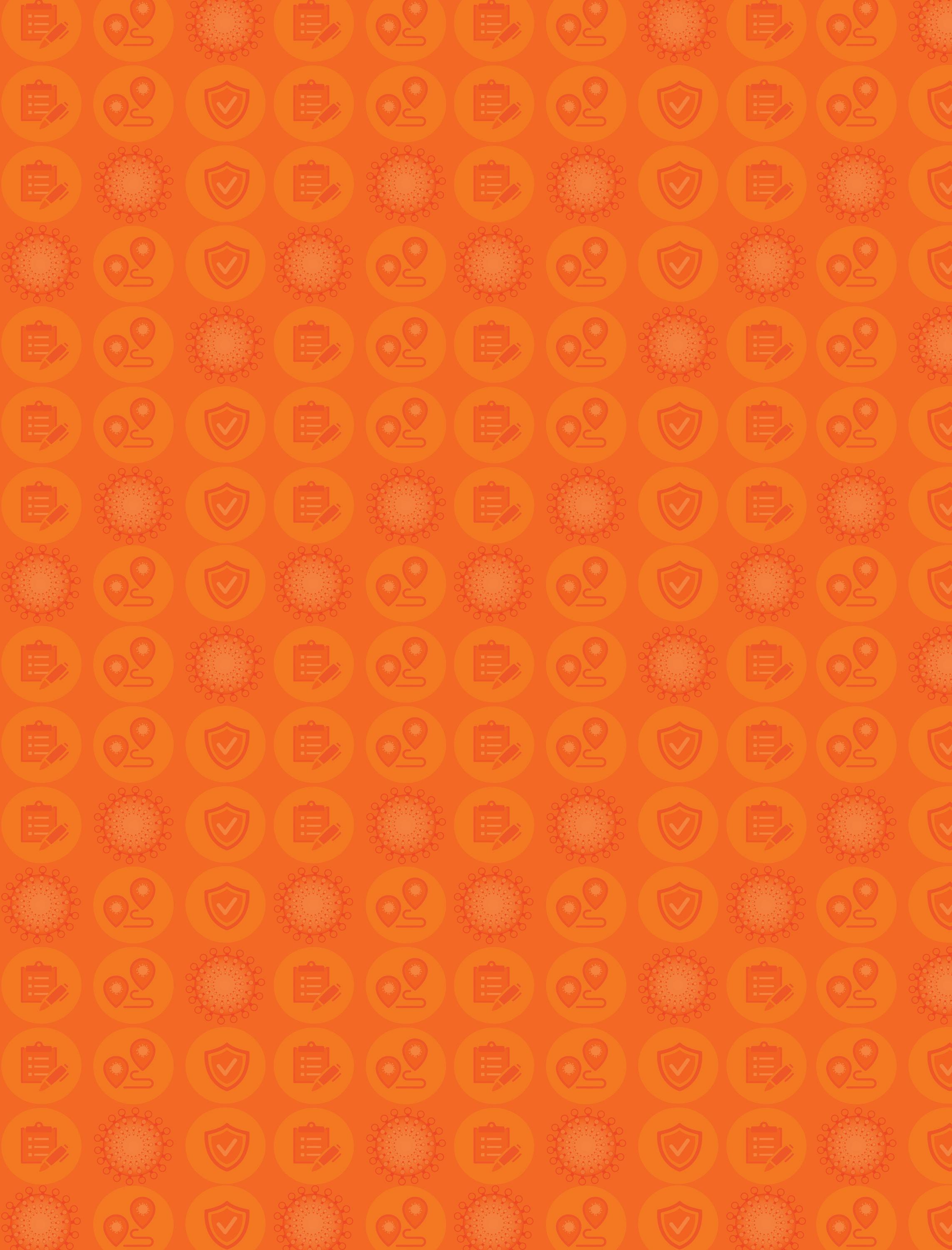
UF scientists attack COVID-19 on all fronts
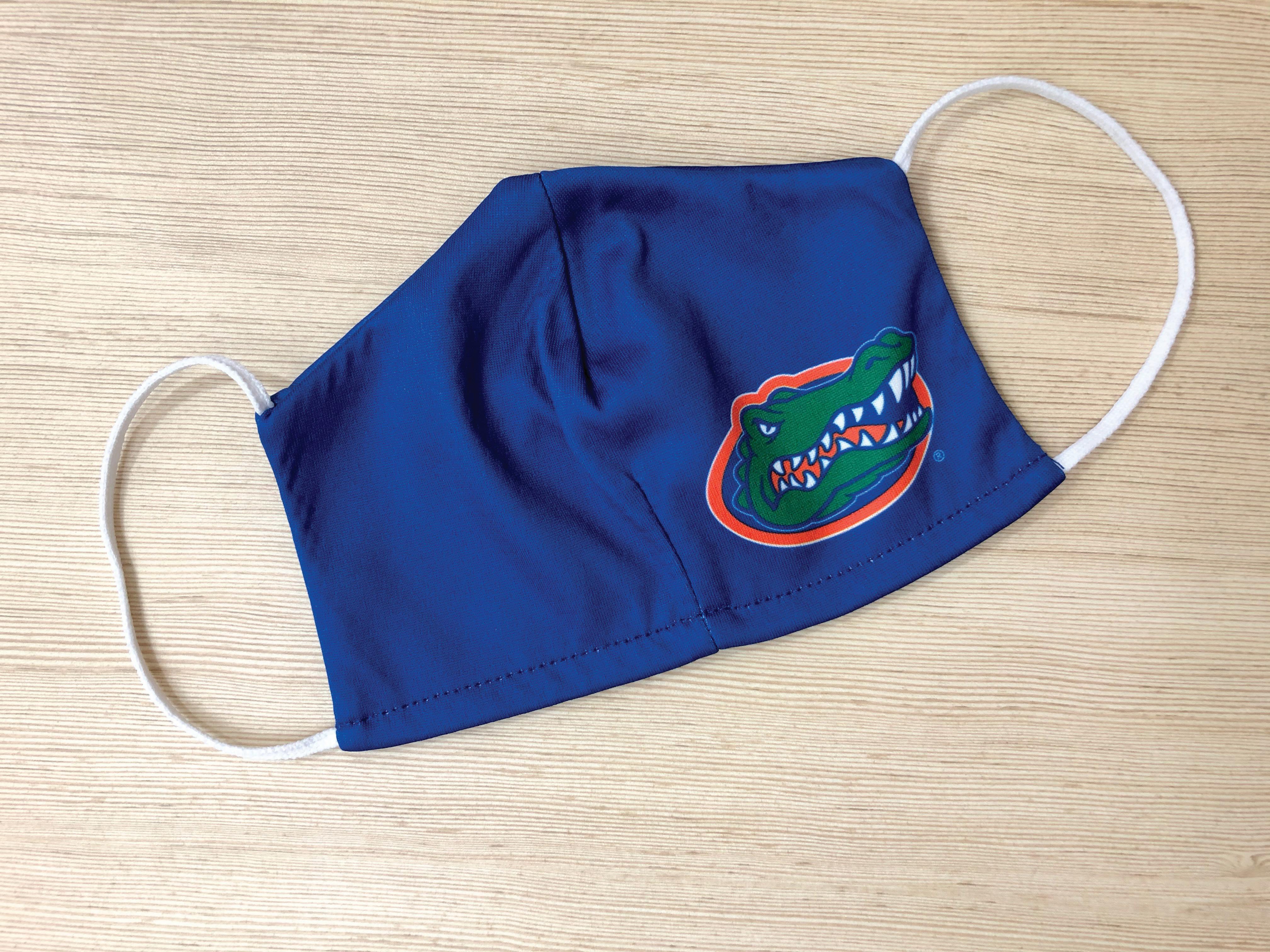
WINTER
2021
When masking up became de riguer, Gator Nation responded. Gator masks quickly showed up in campus shops, and a brigade of crafters began making homemade masks with a Gator theme.
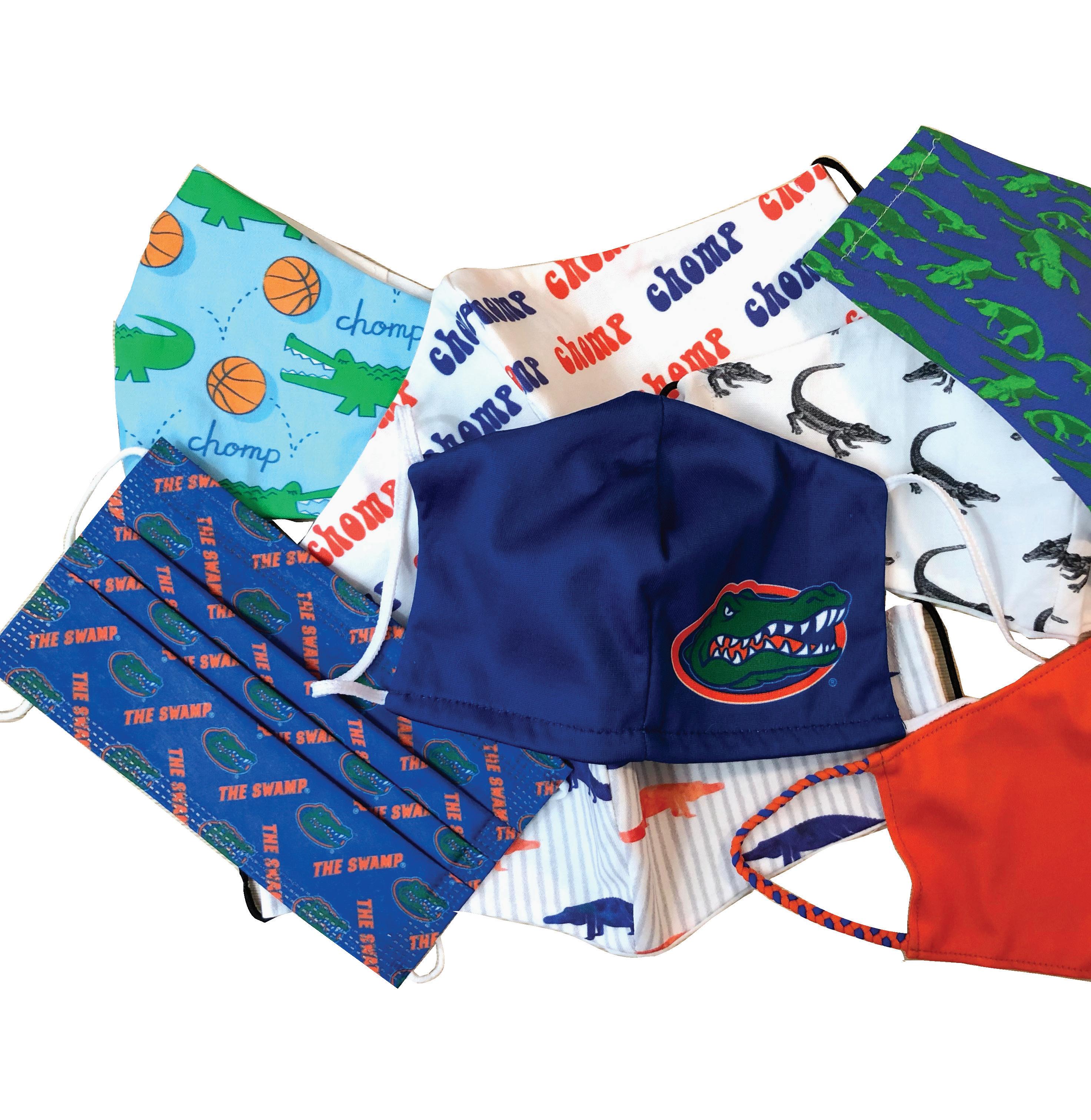
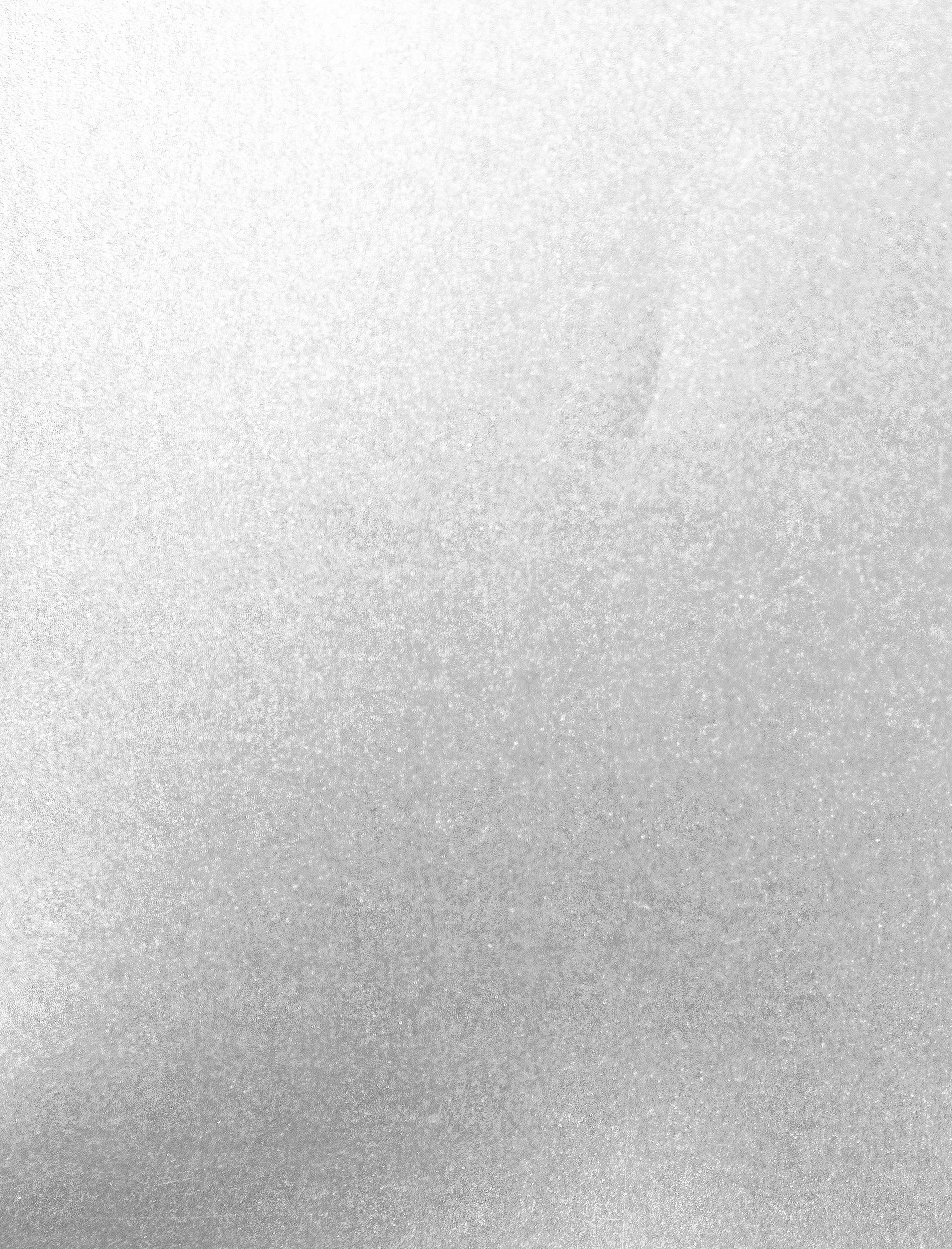
Winter 2021, Vol. 25, No. 1
Some photographs in this issue were taken before the beginning of the pandemic.
Research Leadership and Perseverance Through A Pandemic
Pivoting to the Pandemic UF scientists attack COVID-19 on all fronts
on Investment
Dr. Kent Fuchs
President
Dr. David Norton
Vice President for Research
Board of Trustees
Mori Hosseini, Chair
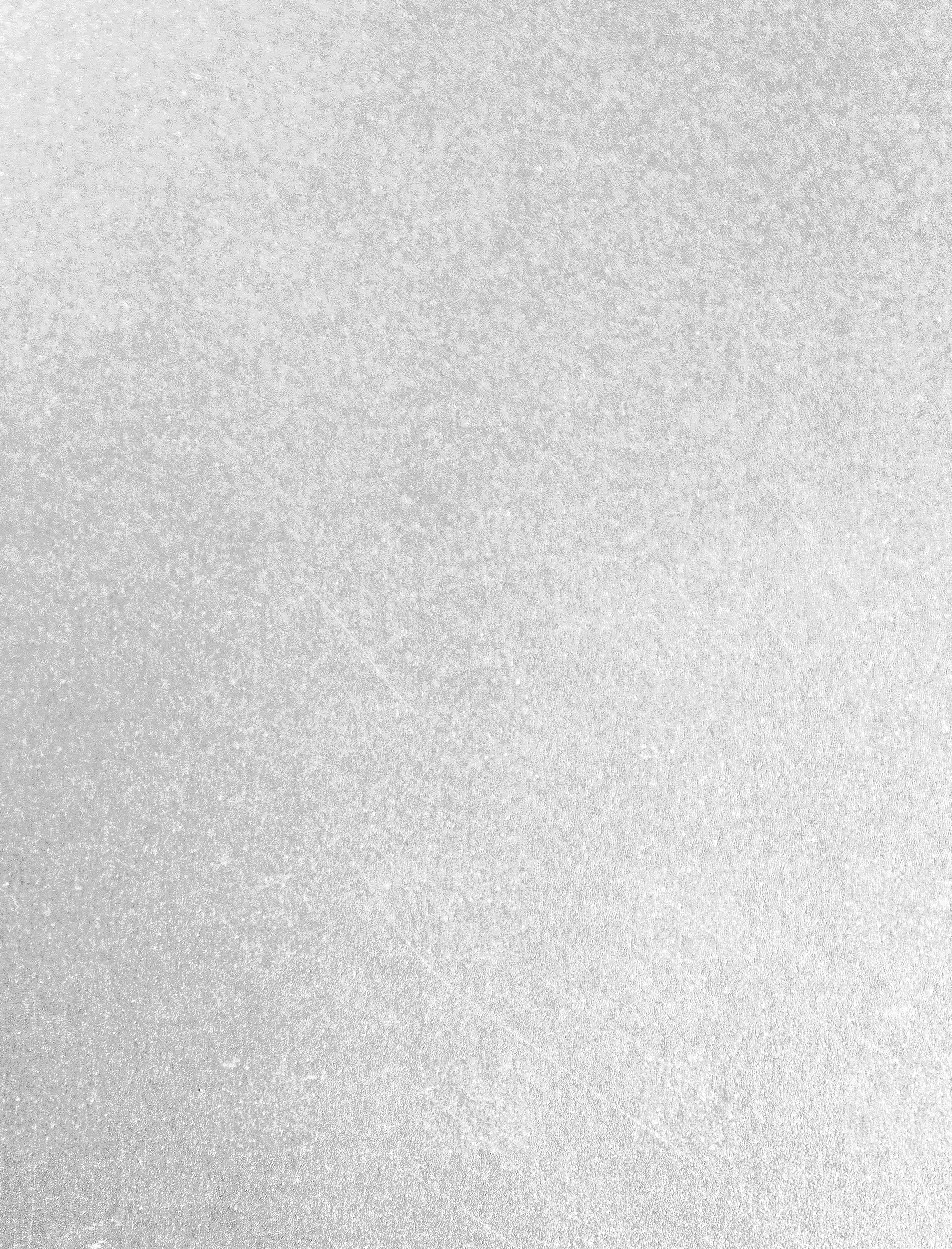
David L. Brandon
Richard P. Cole
Sylvain Doré
James W. Heavener
Leonard H. Johnson
Daniel T. O’Keefe
Thomas G. Kuntz
Rahul Patel
Trevor J. Pope
Marsha D. Powers
Jason J. Rosenberg
Anita G. Zucker
Explore is published by UF Research. Opinions expressed do not reflect the official views of the university. Use of trade names implies no endorsement by the University of Florida.
© 2021 University of Florida. explore.research.ufl.edu
Learning Online
UF Literacy Institute provides reading resources for teachers
Tourism Economy
Editor: Joseph M. Kays joekays@ufl.edu
Art Director: Katherine Kinsley-Momberger
Design and Illustration: Katherine Kinsley-Momberger
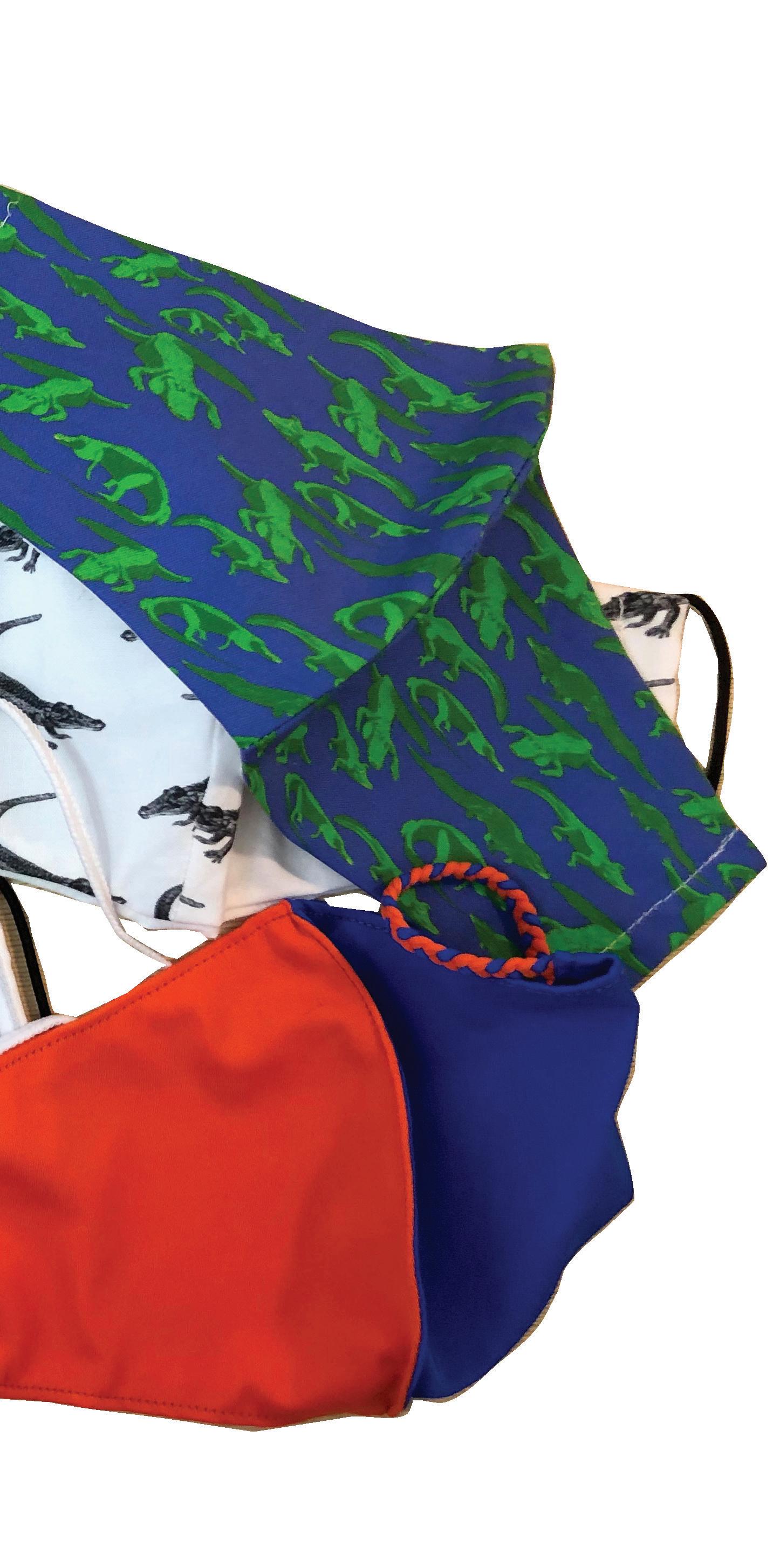
Ivan J. Ramos
Writers:
T. DeLene Beeland
Macayla Bricarell
Joseph Kays
Cindy Spence
Web Editor:
Karla Arboleda
Copy Editor: Bruce Mastron
Printing:
RR Donnelly, Orlando
Member of the University Research Magazine Association www.urma.org
14 22 20 6
UF’s Emerging Pathogens Institute was created for this moment 4 18
Return
Extracts News briefs
Travel stoppage has massive ripple effect
March 2020
Researchers and staff directed to move functions to remote workplace
April 2020
Commissioned task force to plan oncampus research resumption
May 2020
3,000 researchers approved to resume laboratory activities under UF COVID protocol
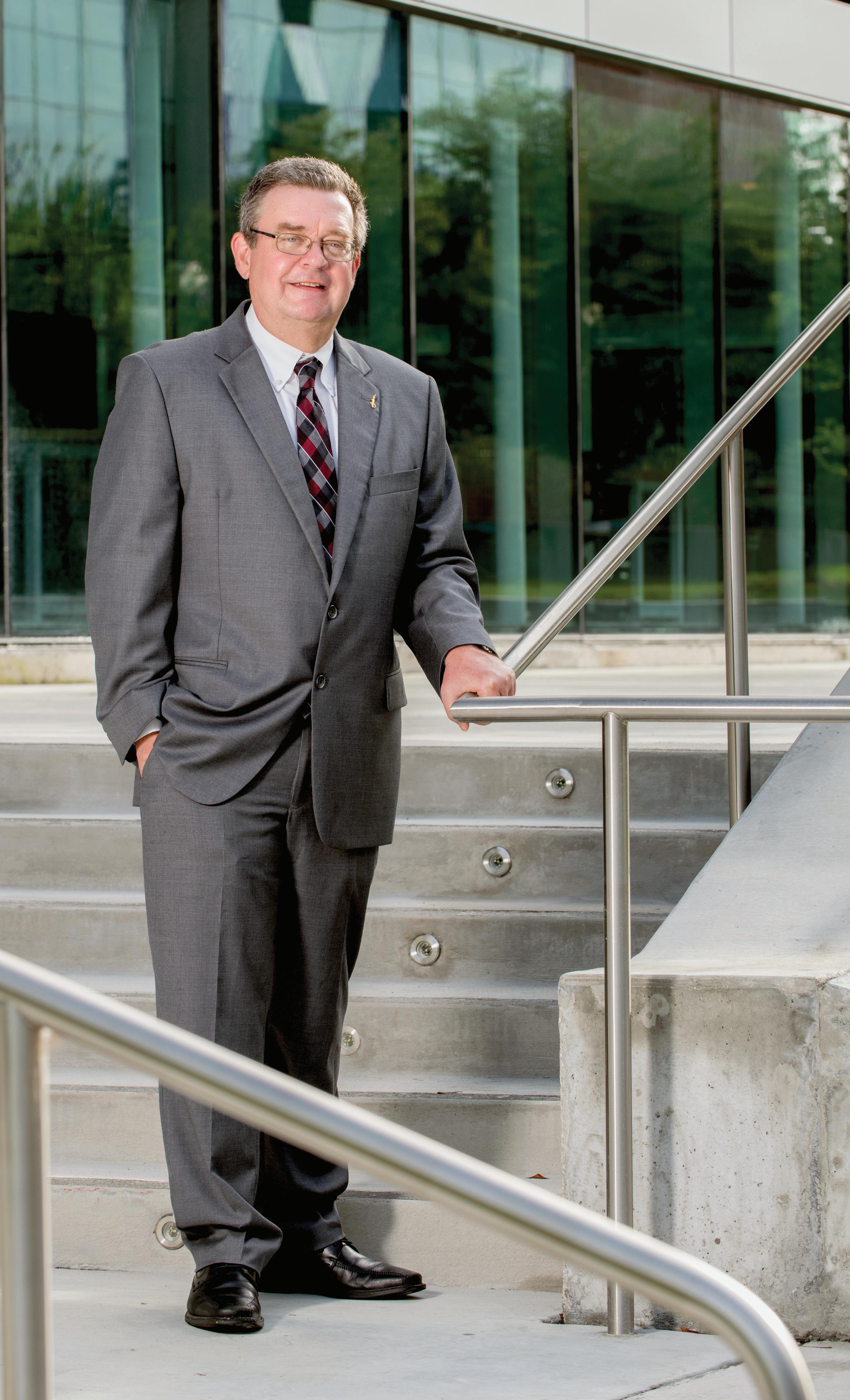
4 Winter 2021
DaviD norton Vice President for Research
John Jernigan
Research Leadership and Perseverance Through a Pandemic A
merica’s research universities are a national treasure that are essential to expanding our understanding of the world, advancing new technologies and strengthening the economy.
And never have they been more valuable than when the global pandemic hit. Tens of thousands of researchers across dozens of disciplines quickly pivoted to deploy all of their talents in the global fight against COVID-19, and while significant uncertainty remains, their work has helped us to better understand this life-threatening pathogen and develop strategies for treating it and, eventually, preventing its transmission.
However, the forced slowdown of so much of the world’s academic research poses significant challenges moving forward. At the University of Florida and hundreds of other research universities around the country, the early weeks of the pandemic shuttered many of our research efforts. While faculty and students did everything they could to preserve their work, some projects were lost and will have to begin anew.
The focus on COVID-19 did not change the need for solutions to medical, environmental, social and other challenges that are immune to the demands of the coronavirus, so we have slowly and deliberately reopened our labs, guided always by the advice of public health professionals.
Faculty at academic institutions like ours are returning to their research, because they know that science delayed is opportunity lost for people who could benefit from their discoveries, whether it’s a new medical treatment or a breakthrough technology.
Managing risk is something scientists know well. From lab safety protocols to human subject protections, university research is always done with guardrails that allow us to accomplish the necessary goal while minimizing the risk. We have applied these same principles to restructure our work environments to reduce the risks of COVID transmission. We work with faces masked, physically distanced, hands sanitized and heads on a swivel, looking for any evidence
that the virus has infiltrated our workspace.
Pursuing our research objectives with these necessary precautions in place has created new challenges, from increased costs to decreased mentoring opportunities. As a large research institution, the University of Florida captured a record
$900 million in research funding in fiscal year 2020 despite the work slowdown. Keeping our nation a world leader in science and technology will require continued funding, even in the face of economic uncertainty. Mentoring the next generation of scientists is even more important as we confront new challenges on every front.
For most, our professional and personal lives have had to adjust to the challenges of COVID-19. From July through October, my routine became taking my granddaughter out for a walk every afternoon. This was a new part of my daily schedule, an unexpected part of my “new normal.” Unexpected because she was born in California earlier this year, far removed from her grandparents in Florida. She and her parents were here, living with us, because of COVID.
Her presence reminded me of why what I do is important. I would think about her life ahead, think how she was born into a pandemic, how her life will differ from that of her parents and grandparents. I think about how the pandemic will impact her path.
As her grandfather, I care intensely about the needs and aspirations of this one individual. As a leader at a major research university, I care about how the pandemic has affected our students, our faculty and our staff.
I wonder what discoveries are being delayed or denied due to the pandemic. Will new therapies and new cures arrive too late for those who need them? Will opportunities be lost for innovative technologies to launch new companies or industries?
The decisions we are making today will have lasting effects, positive or negative, on the lives of our children and grandchildren. We must not relent in our pursuit of new knowledge. To stall scientific research is to deny a bright future for many. Every generation faces unique challenges. I have faith that America’s scientific leaders and policy makers will rise to this great challenge, and world-class academic research institutions like the University of Florida will be able to continue to benefit future generations.
5
2020 UF researchers submit record number of grant proposals during quarantine
2020 Record-breaking research awards $900.7M
By Cindy SpenCe
Pivoting to th e Pandemic
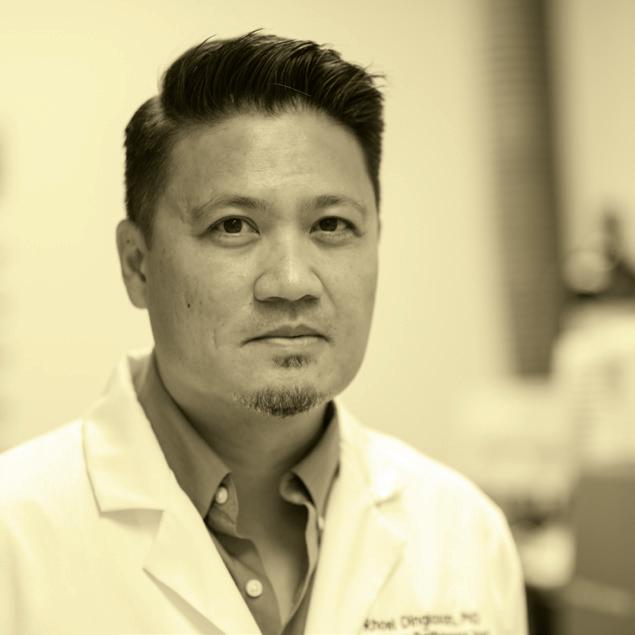
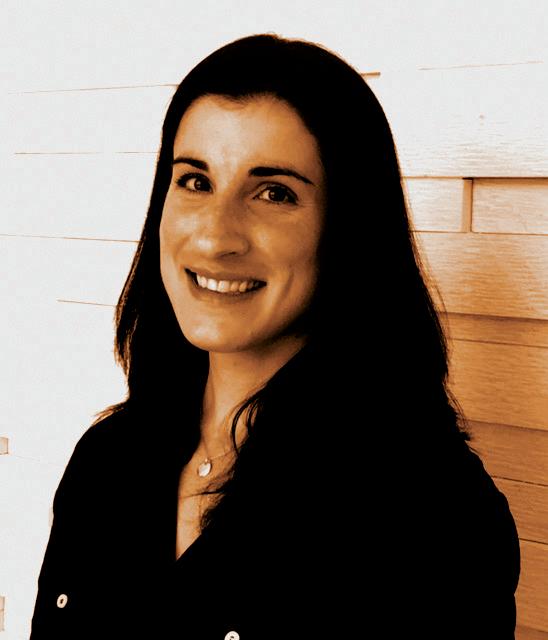
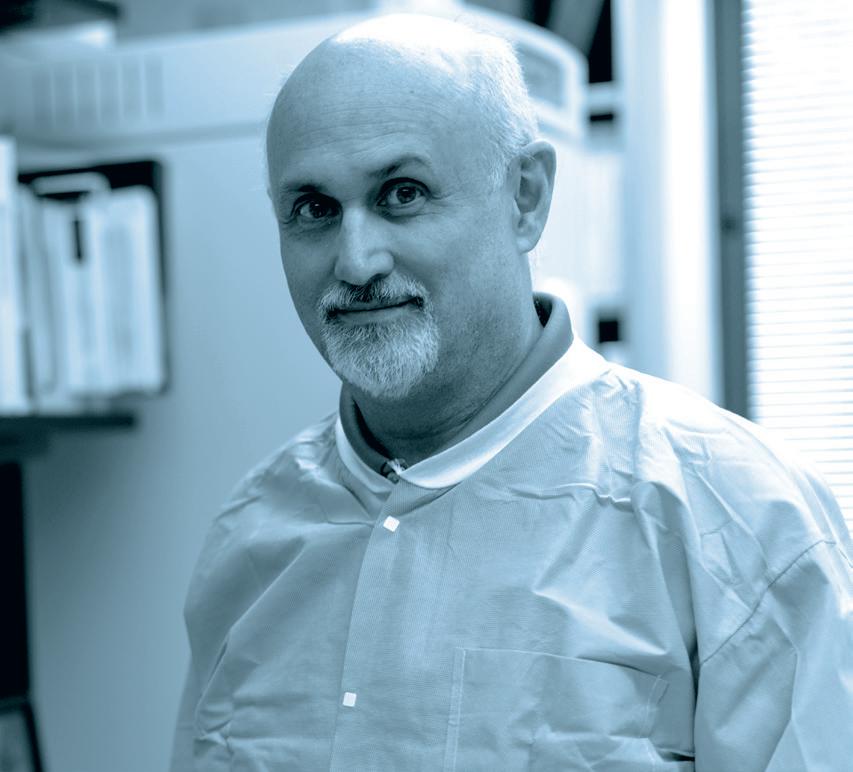


 Rhoel Dinglasan
Rhoel Dinglasan
6 Winter 2021
UF scientists attack COVID-19 on all fronts
In 2020, as an uneasy world wrapped its arms around a future of uncertainty and risk, researchers around the globe responded the only way they knew how: an allhands-on-deck approach to science.
As University of Florida science historian Betty Smocovitis observed the unfolding drama from lockdown in her home, she saw something new.
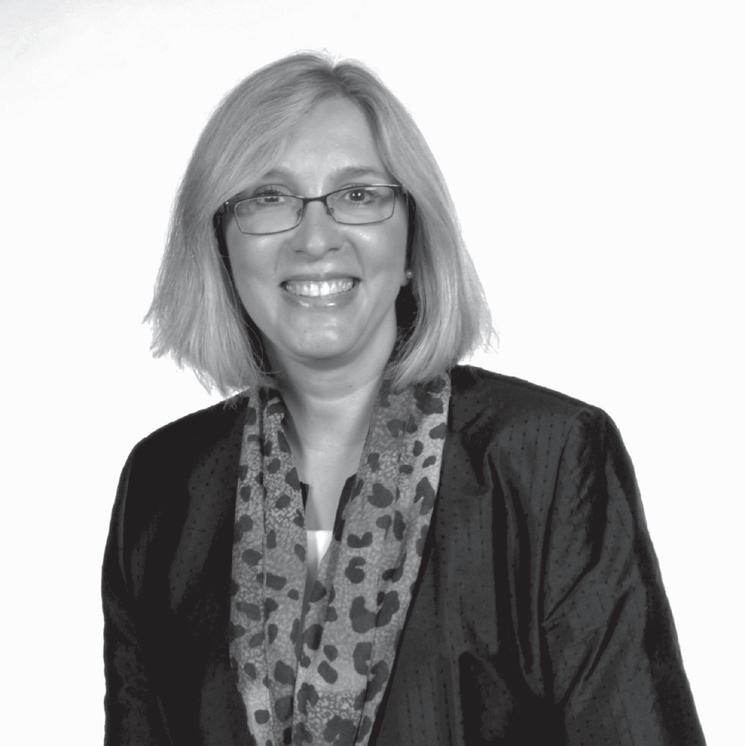
“What we were watching is what it can look like when a planet literally coordinates its brains, and science is at the heart of it,” says Smocovitis, a professor with a dual appointment in the history and biology departments.
At UF, researchers joined what has been called the pandemic pivot, changing directions from decades-long research programs to apply their skills to what likely will be viewed as the greatest science challenge of a generation.
“All the disciplines were reorienting their expertise, literally turning around and saying, ‘There’s a crisis; what can I do to help?’” says Smocovitis, who began incorporating the spreading pandemic into her own course as early as January. “And it wasn’t just scientists; it was the social sciences, the humanities, the clinicians, the theorists. People were coming from almost every direction.”
In the modern history of science, some events stand out: the Manhattan Project, the polio vaccine, smallpox eradication, and Apollo 13 bringing stranded astronauts home against all odds. The difference with COVID-19, Smocovitis says, is how engaged the public became with science, hungry to learn along with the experts.
“It’s the first time, I think, in the history of science that we saw science on the front page. Not scientists, but actual
science, as people grappled with terms like exponential growth and what it means to flatten the curve, how a virus spreads. We’ve never seen anything like it.”
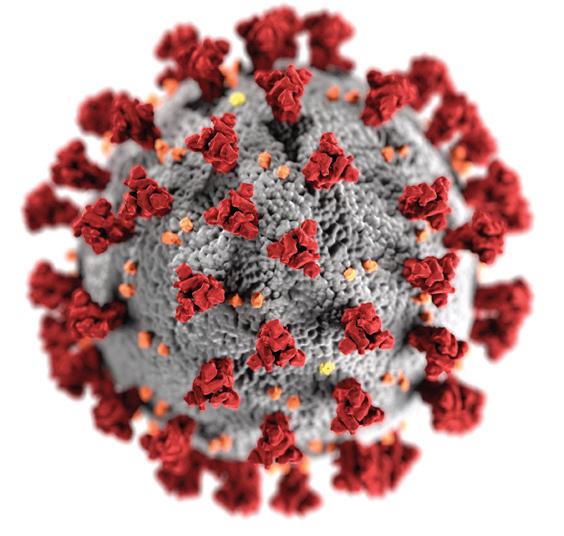
Confronted with problems, scientists responded with “what if …” Ideas big and small emerged as UF researchers some from makeshift lab benches on kitchen counters began to tackle any aspect of the pandemic to which they could lend expertise.
When ventilators became a scarce resource, UF designed new models. When testing materials were in short supply, new tests were developed. When N95 masks disappeared from shelves, an abundant surgical cloth was repurposed to protect health care workers. When aerosols became a concern, an international team was assembled to study their behavior. And reams of data, the gold standard for tracking a global health threat, were analyzed in near-record time by UF’s world-class high performance computer, HiPerGator.
By design, the scientific process is not agile. From idea to publication in a journal, the process is meticulous, even plodding in a one step forward, two steps back fashion.
But scientists, it turns out, are agile.
In 2020, confronted with uncertainty and risk, UF scientists responded with ideas and quickly put them to the test. Even as UF’s $900 million research engine came out of lockdown and purred back to life in the summer, COVID work stayed strong, much of it boosted by a special $2 million internal research fund. And, as Smocovitis notes, 2020 will make a mark on research projects for years to come.
But here’s how it all started, a glimpse at how UF’s science team responded with agility and ingenuity to the pandemic.
“Do you remember what it was like in March and April when we had to mobilize the intellectual resources of the world?”
— UF historian Betty Smocovitis
7
A Big Need
Samsun Lampotang got an email on March 16 from a colleague who laid a problem on his doorstep. Medical centers were buying ventilators the way the public was buying hand sanitizer and toilet paper, and the supply was drying up just as the need was about to skyrocket.
By April 12, his colleague predicted, there would be a surge of coronavirus hospitalizations and a whopping shortage of nearly 1 million lifesaving ventilators. The government had turned to General Motors and Ford to pick up the slack, but those assembly lines could hardly be retrofitted overnight.
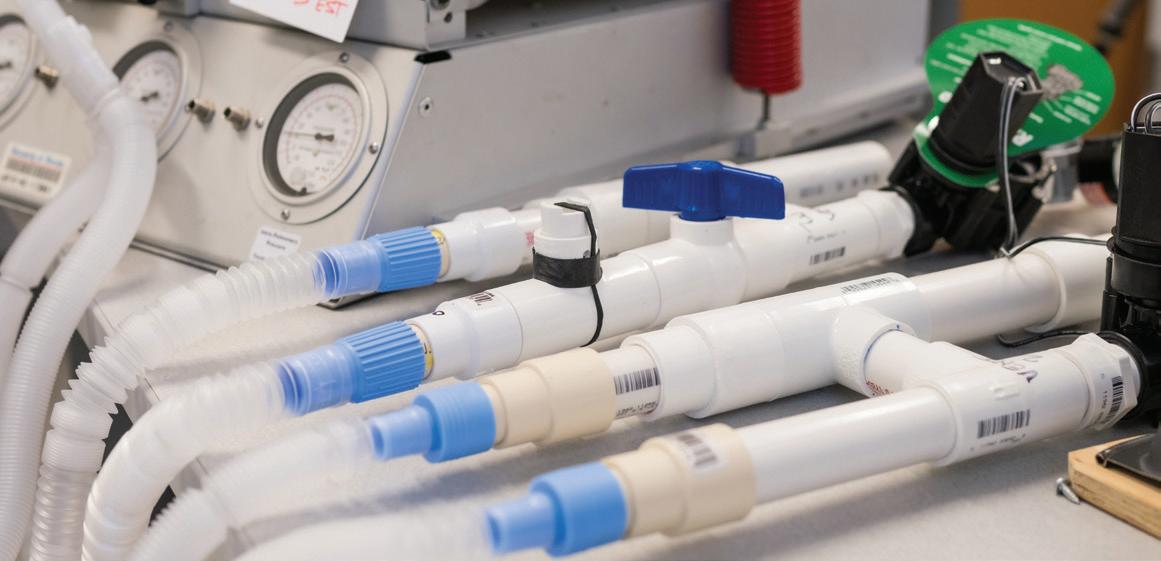
Lampotang, a professor of anesthesiology and a prodigious inventor whose first invention was a ventilator, thought about the shortage for a split second then sent a graduate student to Home Depot for PVC pipe and sprinkler valves.
“I was not daunted by the concept of building a ventilator because this was not my first rodeo,” says Lampotang, who develops simulators that allow medical procedures to be tested on devices before they are used on patients. “I was daunted by the concept of having to supply 950,000 in four weeks. How do you make that happen?”
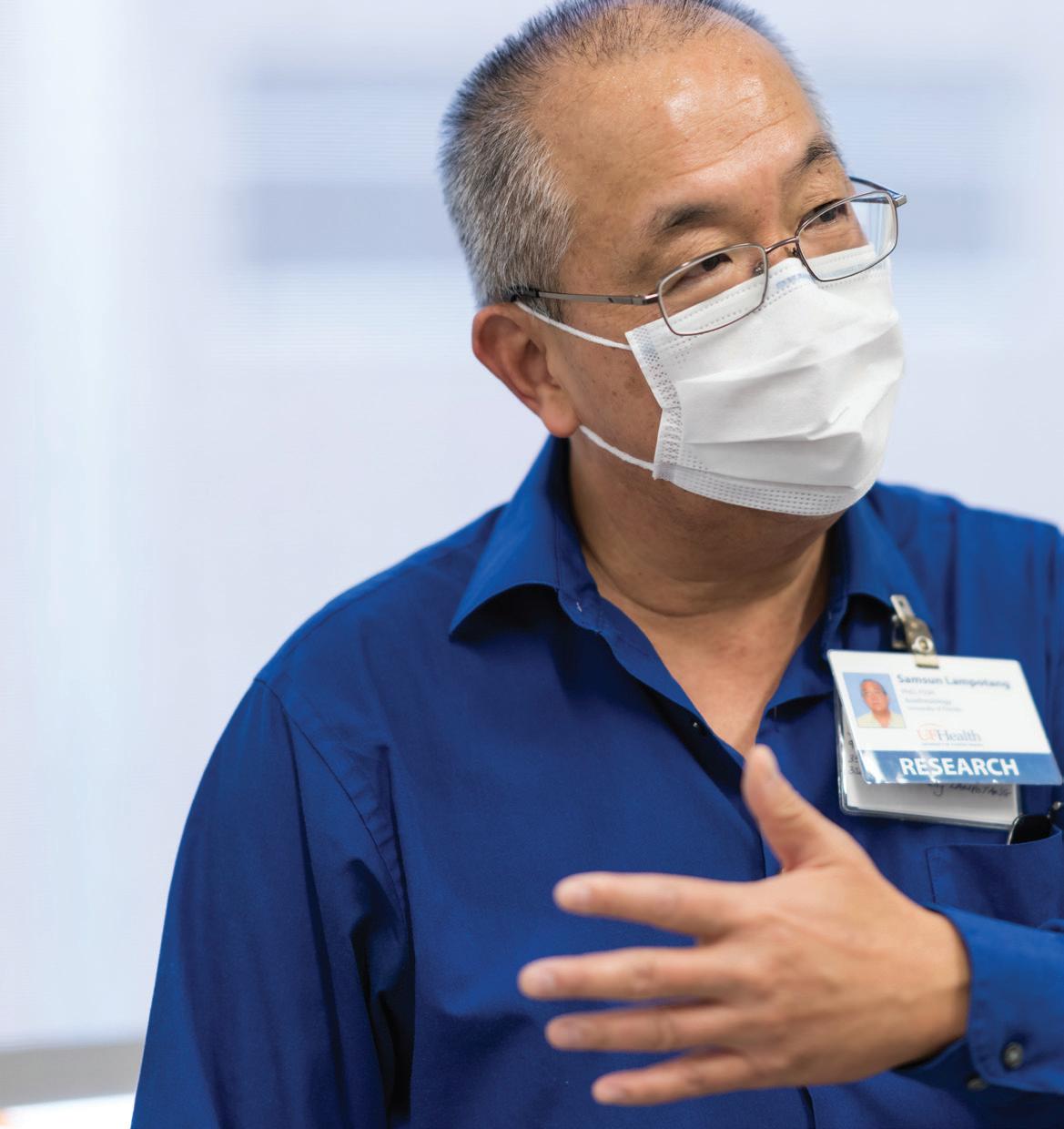
Using household parts was key, Lampotang says. One country alone purchased 30,000 ventilators in March, drying up not only ventilators but the supply of parts to make them.
“When you order that many, you suck up all the components. It’s like if you’re a baker, and someone ordered a gazillion cakes,” says Lampotang, the director of UF’s Center for Safety, Simulation & Advanced Learning Technologies. “Good luck finding flour, yeast, eggs, to make cakes.”
From retirement, UF associate professor Gordon Gibby pitched in. In addition to being an engineer and a doctor, Gibby is a gifted coder, so he wrote the code and tested the device on his dining room table before posting the code online, open source and free to anyone. The ventilator can be made for $400; the next cheapest version is $10,000.
Lampotang continuously updated specs as he refined the device, and one day, while trying to do an update on the website, he could not log on. He called tech support. The problem? There were 150,000 people on the site checking out the instructions.
The need for ventilators in the U.S. has waned, but in Africa, some countries had no ventilators or just one for two million people. Already, South Africa and Mauritius have built the open source ventilators, and UF’s Center for African Studies has helped with webinars in French and English.
“It all happened so quickly,” Lampotang says. “I was still processing what I’d heard about the coronavirus when I got that email, but there was no way I could stand on the sidelines when I knew I could help.”
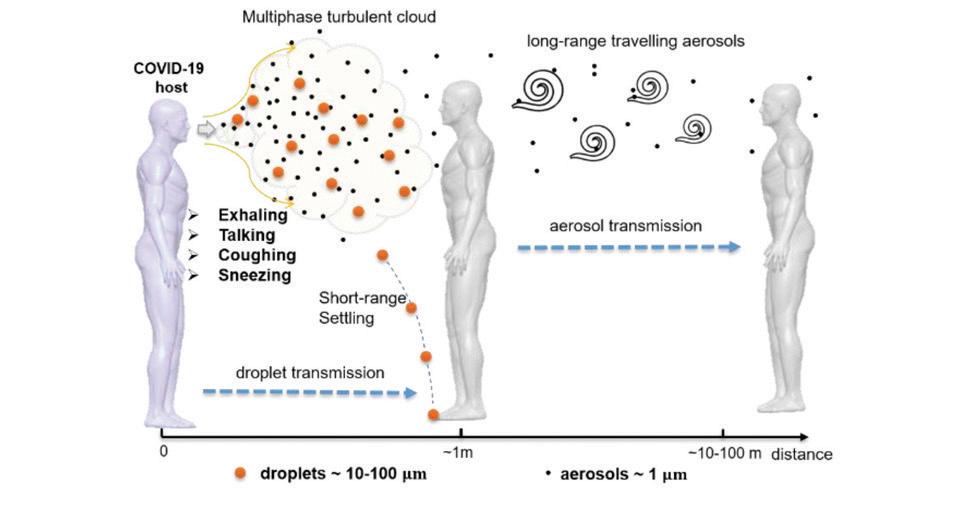
8 Winter 2021
Jesse Jones
Direct Route Indirect Route Two routes of transmission
Samsun Lampotang
Airborne Threat
Bala Balachandar studies complex multiphase turbulent phenomena that can’t be tested in a lab, such as nuclear explosions or volcanic eruptions, and had no notion of diving into coronavirus science until he kept hearing one word more and more often: aerosols.
The unsettled science of how coronavirus infects humans revolved around tiny viral particles that can travel great distances through the air, just the kind of multiphase turbulent flow problem Balachandar tackles in the U.S. Department of Energyfunded Center for Compressible Multiphase Turbulence.
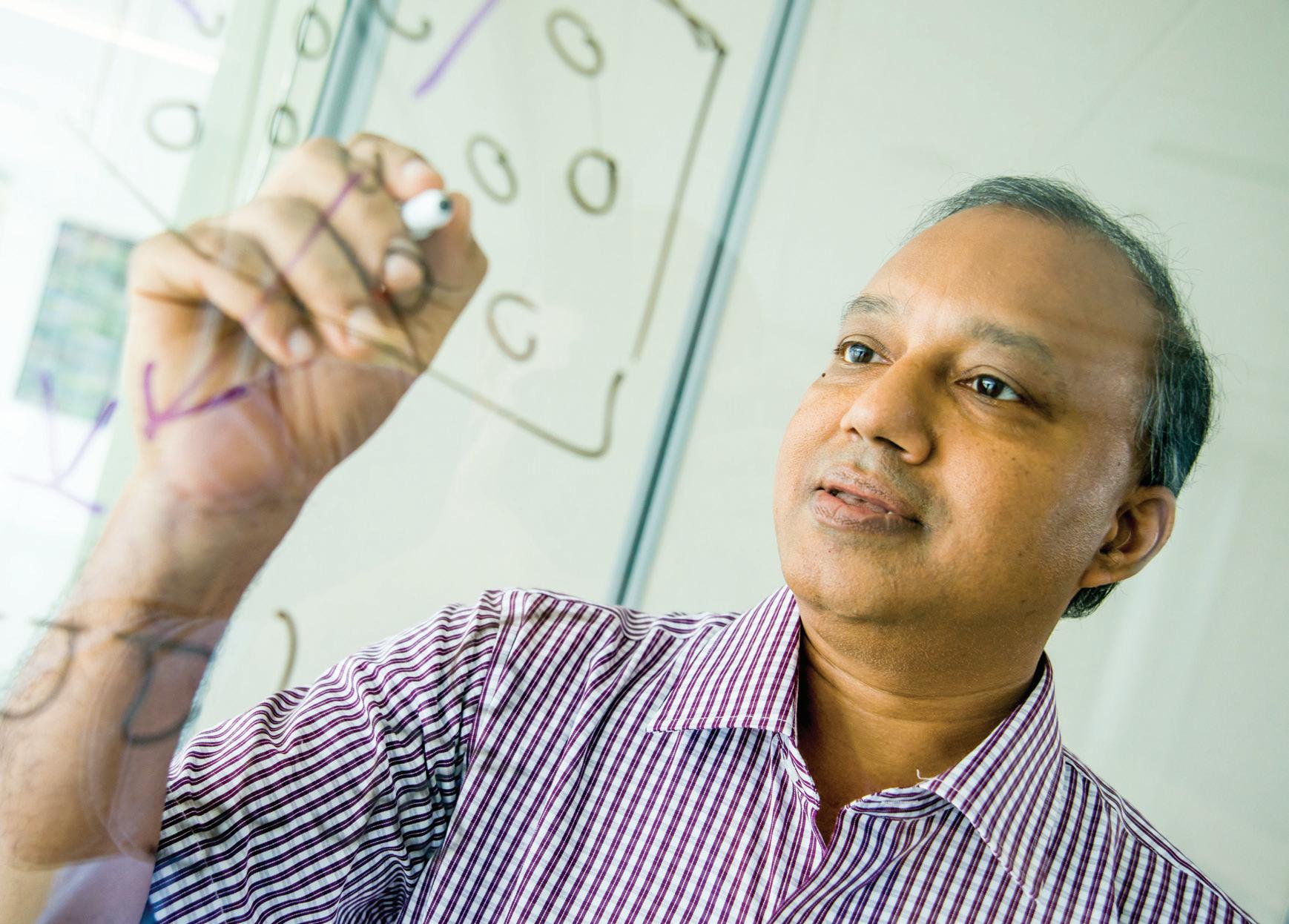
As all the world was going crazy sanitizing surfaces, Balachandar organized an international team, and his lab quickly assembled simulations of how human exhalations travel after a cough, or a sneeze, a laugh, a song, a breath, potentially carrying tiny coronavirusladen aerosols along with them.
“It is increasingly clear that airborne transmission is an important
contributor to rapid spreading of the disease,” says Balachandar, a professor of mechanical and aerospace engineering with funding from the U.S. Navy to study atomization of liquid spray. “We don’t have the fundamental knowledge we need at this moment. Our job is to develop that kind of knowledge.”
In July, 239 scientists asked the World Health Organization to acknowledge airborne transmission’s role in viral spread, and later, the Centers for Disease Control and Prevention did just that.
In August, an interdisciplinary UF team posted results of a spot test in a hospital room with two coronavirus patients. The team isolated live coronavirus in air samples collected about 7 feet and about 16 feet from a patient with an active infection, but not outside the room, thanks to infection control practices.

“The next step is to be able to say how it got there; was it a one-time occurrence?” Balachandar says. “That’s where we come in. We want to show
“It is increasingly clear that airborne transmission is an important contributor to rapid spreading of the disease.”
— Bala Balachandar
how and why the aerosols can travel that far.”
The theoretical framework is science in motion, as the lab conducts simulation after simulation. Already they know that 6 feet of social distancing is not always enough to keep aerosols at bay and that many variables govern how the coronavirus-laden aerosols waft through the air.
“I first thought that COVID would go away, so I didn’t want to redirect my interest,” Balachandar says. “But then it became very clear COVID isn’t going anywhere.
“This is not a very easy problem to solve,” Balachandar says. “But we need to try. Even if we solve COVID, it’s just a matter of time and a couple of years before something else comes along.”
9
John Jernigan
Bala Balachandar
Testing Bottleneck
Testing quickly emerged as a key issue in the pandemic. UF researchers sprang into action early, building a lab in 10 days that could test the particularly vulnerable older population of The Villages, a massive retirement community in Sumter County south of Gainesville. And UF engineers teamed up with Exactech, an orthopedic technology firm, to use 3D printers to make nasal swabs when it became clear the swab supply would run low.
Researchers in fields removed from coronavirus also switched directions.
Rhoel Dinglasan, a malaria researcher, retooled a new saliva-based malaria test he developed a year ago. The breakthrough, a game changer for malaria, became a breakthrough for COVID-19 when he discovered it would detect coronavirus.
The smartphone-based rapid saliva test Dinglasan and his colleagues developed detects not only malaria and COVID-19, but anemia, too, and won second place in a National Institutes of Health competition along the way. The test utilizes a CLIP-CAM, an adapter attached to a smartphone that allows a detection cassette to be inserted into a slot. The camera flash excites the detection system in the cassette, which can then be read by a smartphone app, with results available in 15 minutes or less no lab and no health care worker.
“It’s kind of a selfie for your health, isn’t it?” says Dinglasan, a faculty member in the College of Veterinary Medicine and the Emerging Pathogens Institute.
Piyush Jain took another path to developing a home test. The test uses a strip comparable to a pregnancy test.
“The idea is to have a paper-based system where people can just look at it and say, yes, you have it, or not,” says Jain, a chemical engineering professor whose background is in pharmaceutical sciences and biomolecular engineering.
Jain’s lab works on CRISPR-based testing for diseases. Long Nguyen, a doctoral student in Jain’s lab, had used
CRISPR to detect prostate cancer, HIV and hepatitis C.
“As soon as the novel coronavirus emerged, I saw an application of this technology and immediately jumped right into it,” Nguyen said. “I was super excited not only that the test worked, but also that it showed significantly higher sensitivity compared to other CRISPR-based detection technologies.”
Jain says the test can aid in early detection for patients with an active infection, which would help people know to self-isolate. Clinical validations are almost completed, and the test will soon go before the Food and Drug Administration. The test is also a semi-finalist in the rapid COVID testing category for the XPRIZE, a competition designed to boost innovation, and the team is one of 11 out of 400 to be funded by USISTEF, the U.S.-India Science and Technology Endowment Fund, for out-of-the-box COVID-19 ideas.
The breakthrough is similar to a test in development in California, but with modifications to the CRISPR system that make the test more sensitive, allowing it to work faster.
“We’re not developing a totally new system,” Jain said. “The best analogy is we’re making a better engine for a car
“As soon as the novel coronavirus emerged, I saw an application of this technology and immediately jumped right into it … I was super excited not only that the test worked, but also that it showed significantly higher sensitivity compared to other CRISPR-based detection technologies.”
—
Long Nguyen
that other people are building. When we have a better engine, we can go faster.”
When word of the breakthrough got out on campus, Jain says he was approached by other scientists with ideas to contribute.
“I’m really proud of UF after seeing this response not just for me, but for COVID-19 in general,” he said. “It’s wonderful.”
Technology and Ingenuity
In the Warren B. Nelms Institute for the Connected World part of UF’s Herbert Wertheim College of Engineering researchers found safety solutions in sensors.
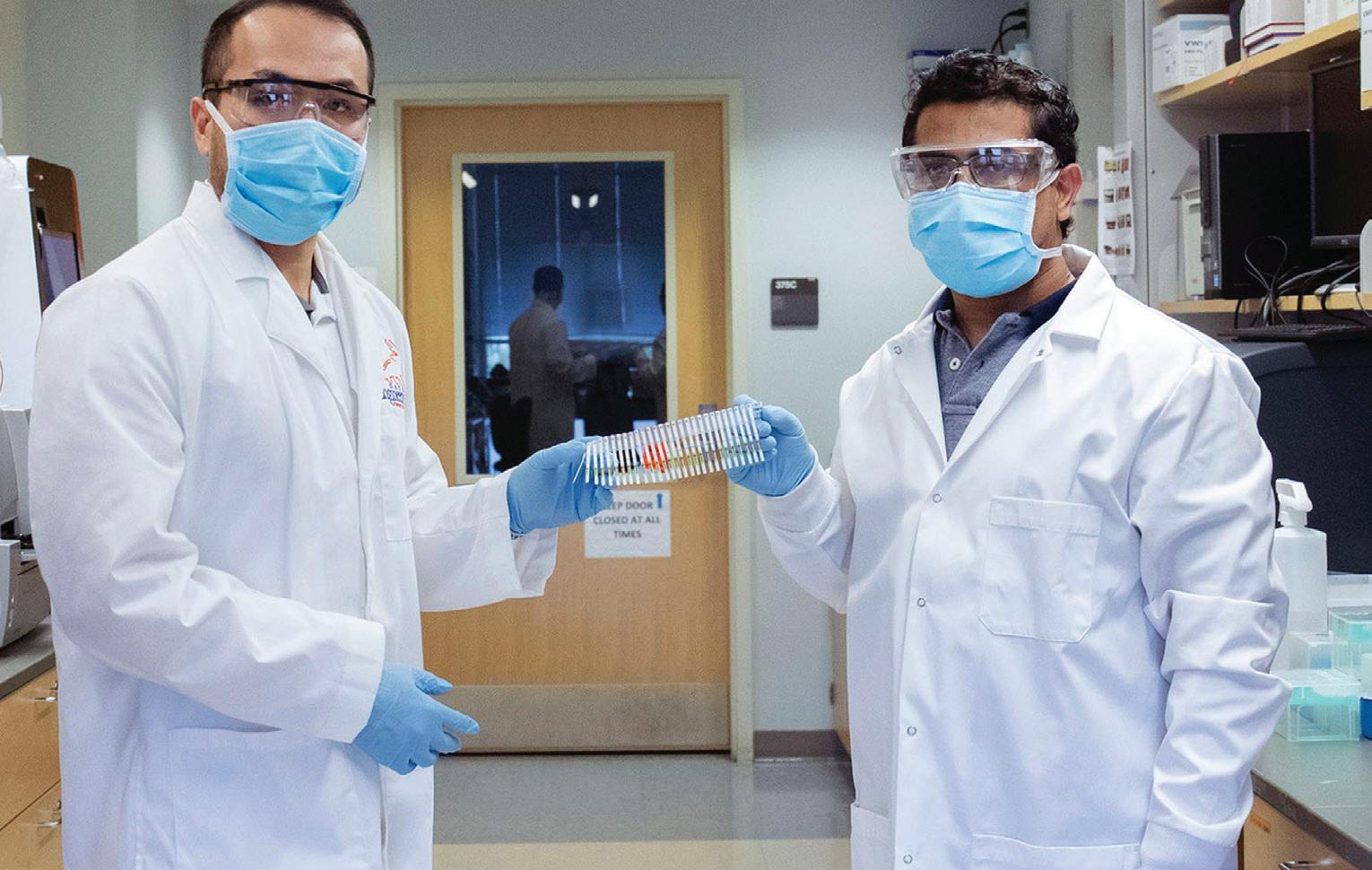
10 Winter 2021
Doctoral researcher Long Nguyen and chemical engineering Professor Piyush Jain developed a paper-based test for COVID-19.
For children returning to school, social distancing is a key to safety, but one with which younger children might struggle. So, researchers developed RiskBand, a wearable device to signal a student when he or she is closer than 6 feet to a classmate. The device can also help with contact tracing because the data can be uploaded at the end of each day and show which students were in close proximity to each other if one turns up sick.
Another wearable, the TRIDENT smart band, continuously monitors a person’s temperature, including subtle changes, so the wearer knows if they should get a coronavirus test. The devices are in the prototype stage and are being evaluated for accuracy in groups of people. They are designed to be inexpensive the TRIDENT band’s cost is around $20 and they operate through an app on mobile phones.
Sensors can also be embedded in masks and help clean them and reduce the amount of virus to which the wearer is exposed. Sensors in the ADAPT smart mask, designed by Swarup Bhunia, the Semmoto Endowed Professor and director of the Institute, can detect particles the size of coronavirus droplets and release a
The
“This material is otherwise thrown out, so by taking it, cutting it and making masks out of it, we’ve repurposed it,” says Bruce Spiess, a professor of anesthesiology in the UF College of Medicine who came up with the idea.
About 10 masks can be made from one 4-foot-square sheet, and an estimated 500 to 1,000 sheets are available from UF Health hospitals every day, Spiess says. The masks are not intended to replace the gold standard N95 although they passed an N95 test in Australia but could help fill a need in the face of a critical shortage.
mist that clings to the airborne droplets, causing the particles to fall to the ground.
Mask design also got a leg up from nanotechnology. Through a National Science Foundation Rapid Response Research, or RAPID, grant, a team of UF researchers developing a mask wrapped with nanomaterials very small synthetic particles in soap molecules designed to kill the virus after it is filtered by a face mask. That solution became important when health care workers began reusing their masks as shortages loomed.
The interdisciplinary team was combining experts in engineering, nanotechnology, epidemiology, public health practices, virology and infection control was led by the Department of Environmental and Global Health in UF’s College of Public Health and Health Professions.
One innovative solution for the mask shortage was lower-tech but high-impact.
Hospitals typically discard the fabric used to wrap sterilized surgical instrument trays. But the Halyard H600 two-ply spun polypropylene can block aerosols and droplets, including water, bacteria and other particles.
A UF Health team produced kits with precut Halyard material along with ribbons, elastic and nose wires. The kits were distributed around the community, and masks were sewn by a brigade of volunteers. When the masks were returned to UF Health, they were sterilized by ultraviolet light or autoclave before distribution.
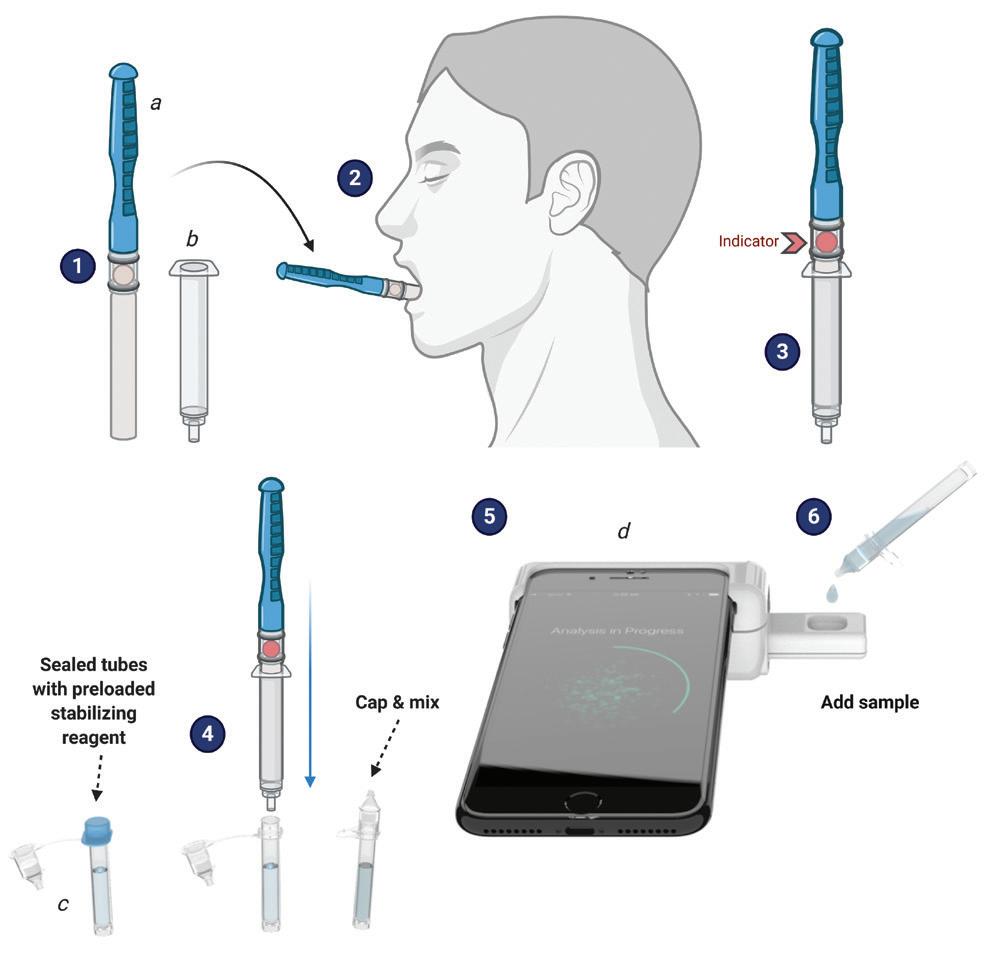
“It was meant to be a cottage industry to create a higher-than-surgical mask filtering system that could be made by local sewists when we had no other PPE available,” Spiess says.
Spiess encouraged ingenuity in design, and several prototypes are in development. The mask has gone global, too, with the design being adopted in dozens of countries, such as Hong Kong, India, Germany, Brazil, Africa and on U.S. aircraft carriers.
“I’ve heard from all over the world where these masks have been made,” Spiess says. “Every hospital uses this same material.”
New Directions for Past Research
In the quest for treatments for COVID-19, David Ostrov and his colleagues decided to take a shortcut. Bringing a new drug to market can take years, but if they could find a drug already in common use with a long safety record and FDA approval, they figured they could speed up the path to a new treatment.
Ostrov had an idea about where to start. He and his colleagues had discovered an inhibitor of
11
A smartphonebased rapid saliva test developed for malaria detection also works to detect coronavirus.
method does not have to be administered by a health care worker and does not need a laboratory for processing.
ACE2 angiotensin-converting enzyme-2 after the SARS outbreak in 2002. ACE2, at that time only recently discovered, turned out to be the receptor for the SARS virus. The spike protein on the surface of the SARS virus binds to ACE2 on human cells, allowing the virus to waltz in and infect the cell.
Ostrov and his colleagues wanted to know if the ACE2 inhibitor they had discovered might keep the SARS virus from binding to cells, essentially locking the cellular doorway to keep SARS coronavirus out. A collaborator at the National Cancer Institute tested the compound and found that it did, indeed, block SARS, and the work was published in 2004.
“That was part of the trail that led us to where we are today,” says Ostrov, an associate professor in the College of Medicine and the Targeted Therapeutics Program leader at the UF Health Cancer Center.
The first SARS threat passed, but when the new coronavirus, SARSCoV-2, came along, the older work provided a foundation for new research.
Back in March, Ostrov and his colleagues were asked by a company affiliated with the Global Virus Network to test compounds for ACE2 binding and potential antiviral activity. Those compounds did not pan out, but the researchers went back to their own data from 2011 on the approved drugs they had found that bind ACE2, which is also the receptor for SARS-CoV-2.
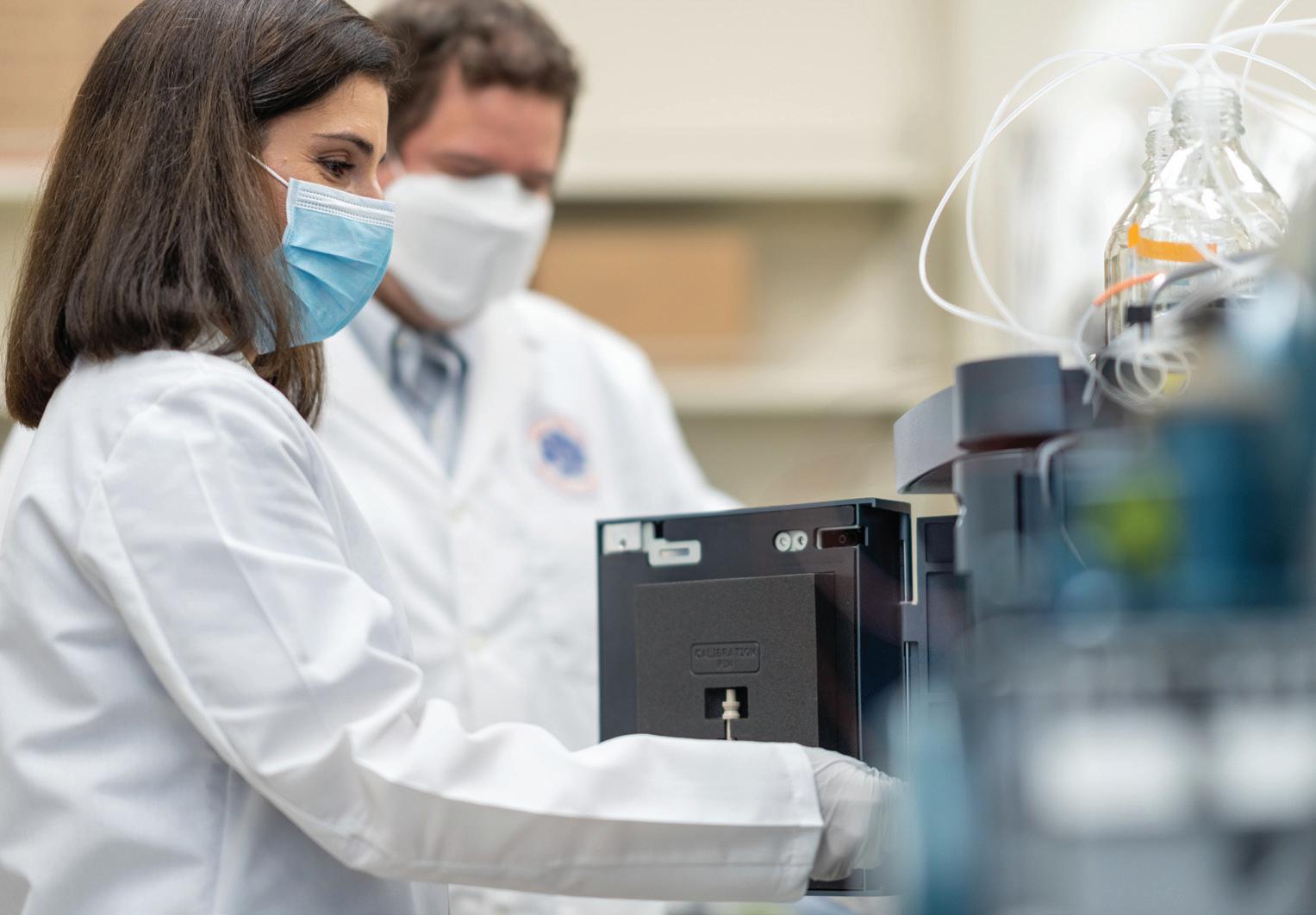
The question: Did the approved drugs actually inhibit the coronavirus in the lab? The research team Ashley Brown, of the UF Institute for Therapeutic Innovation in the College of Medicine; Leah Reznikov, of the College of Veterinary Medicine; and Mike Norris, of the College of Liberal Arts and Sciences tackled the question with funding from the UF Clinical and Translational Science Institute.
One approved drug that binds ACE2 clearly inhibited the virus that causes COVID-19, their work found. The next question: Would other drugs in the
same class also inhibit the coronavirus, perhaps with greater effect?
Ostrov knew he would need more data to answer that question and went “on a worldwide quest” to find it. He found a collaborator at the University of California, San Francisco, and in the health records of more than 219,000 people, the researchers found data both on the patients’ status for infection with SARS-CoV-2 and their drug history for the class of drugs the researchers thought might be beneficial.
“My collaborator was skeptical that this type of analysis could be informative, but went ahead and looked up the statistics,” Ostrov says. “The data we got back were striking.”
In an analysis of common, FDAapproved drugs in the same drug class, three showed a statistically significant association between usage of the drugs and reduced incidence of SARS-CoV-2 positivity. In other words, people in this population who took any of the three drugs were less likely to test positive for SARS-CoV-2.
To find out whether the drugs actually help prevent viral infection and inhibit SARS-CoV-2, Ostrov and his
colleagues returned to the lab. They found three approved drugs that inhibit the coronavirus and found that usage of these drugs was associated with lower likelihood of testing positive for SARS-CoV-2.
The drug usage results were parsed by age and gender, and the associations were stronger in people 61 and older, among the most vulnerable to COVID19, meaning the three approved drugs may have particular benefit in older populations. Randomized placebo-controlled clinical trials will be necessary to determine if usage of any of the three drugs actually prevents COVID.
Ostrov hopes the research provides the basis for an orally deliverable antiviral drug combination, similar to drugs used for HIV and Hepatitis C. The next step, Ostrov says, is publication in a medical journal.
“I’m bursting at the seams, wanting to get this information out there,” Ostrov says.
Viruses, Animals, People
Virologist John Lednicky has been studying viruses, including coronaviruses, for more than 35 years. About four years ago, he developed a test to
12 Winter 2021
Jesse Jones
Ashley Brown
detect betacoronaviruses, one of four groups of coronaviruses, in Brazilian free-tailed bats, a common bat that is also found in Gainesville.
When coronavirus began making news from China in late 2019, Lednicky pulled out his four-year-old test to take another look. He tweaked it a bit and got it ready for the mass testing in The Villages.
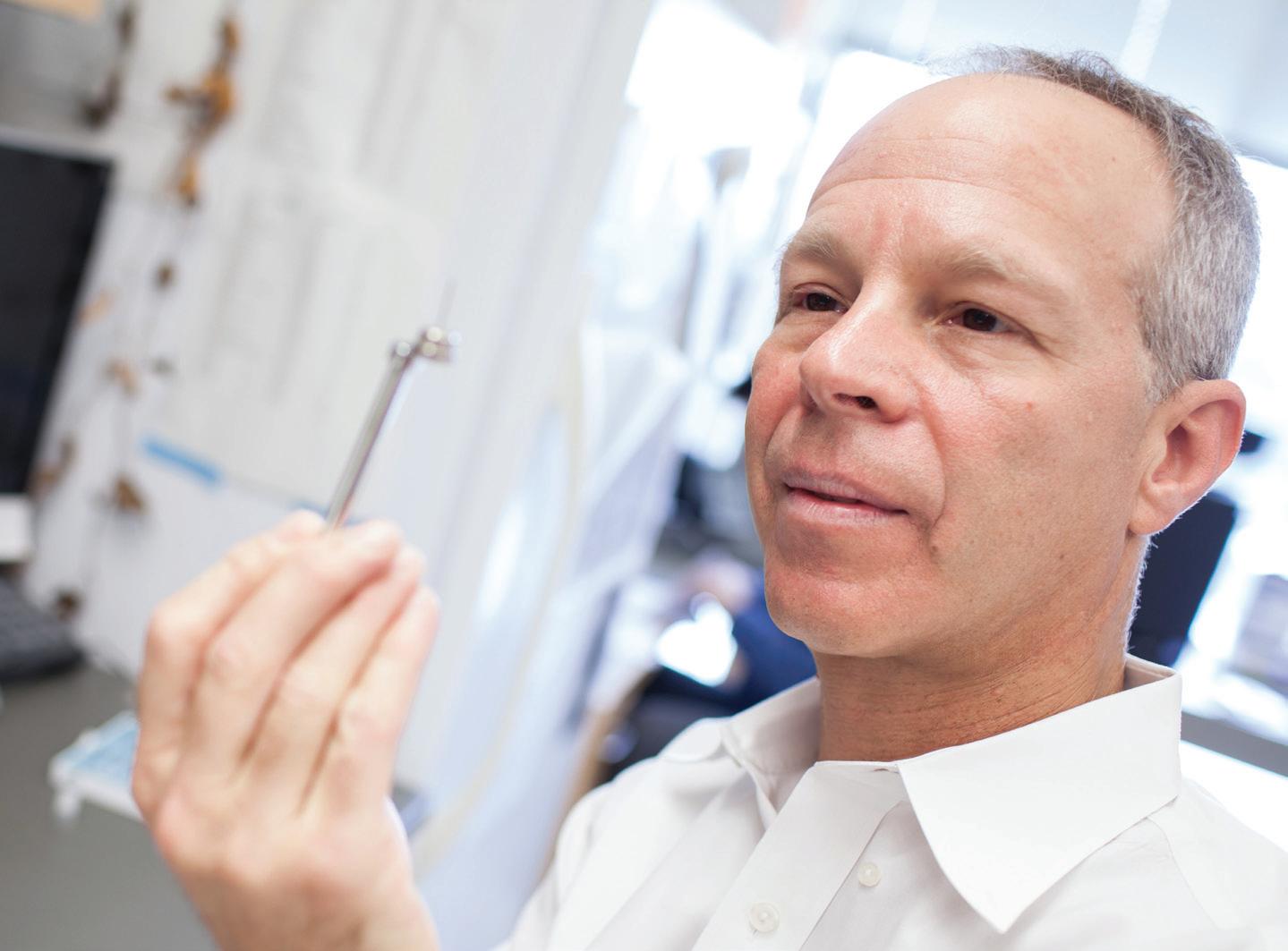
“As soon as China posted the genetic code of this new virus, I was curious to see if my test would pick it up,” says Lednicky, a professor in UF’s College of Public Health and Health Professions. “And I was surprised. My test was a very good fit for the virus. I’m a scientist. We’re always wanting to figure out if our work is helpful for things other than what it was designed for.”
Smocovitis, as a biologist and a historian, was struck by the willingness of scientists in China to share data.
“As a historian of science, it gave me goosebumps,” Smocovitis says. “China uploaded its genomic data and put it on a shared website really early in January. That’s unprecedented.
“They wanted the whole world to work on it. For me, that was a key
moment, when this data was literally uploaded and shared with everyone. That is not the Manhattan Project, which was secret, it was not Apollo, which was about winning the Cold War. When you’re looking at something that is this big, there is no one left untouched on the whole planet.”
When the pandemic emerged, Smocovitis was teaching “The History and Evolution of Infectious Disease,” a popular course she has taught since 1997. She was in demand as someone to bring the community at large into the culture of science, writing guest columns and doing a video for the Max Planck Institute for the History of Science and a podcast for the Consortium for the History of Science, Technology and Medicine in Philadelphia.
She noted the zoonotic component, the jump of the virus from bats to people, as a feature in other epidemics and pandemics, and something that had been predicted. Academics, she says, know enough to be scared.
“As a historian, it’s terrifying because I live with the Black Death,” Smocovitis says. “It killed a third of the population of Europe, and when you
“My collaborator was skeptical that this type of analysis could be informative, but went ahead and looked up the statistics. The data we got back were striking.”
read the testimonials that speak to you from the past, you really feel that existential threat. These people are dead, and they’re still speaking to you.
“So I don’t think it’s an accident that researchers are dropping what they’re doing,” Smocovitis says. “You take what you know, and you try to make things better.”
Although science has been attacked on occasion, Smocovitis says it is rising to this challenge.
“Is it like the Manhattan Project? No, this is much bigger,” Smocovitis says. “It’s more like an asteroid is coming. How do you coordinate everybody on planet Earth?”
Contributors to this report include Michelle Jaffee, T. DeLene Beeland, Alisson Clark, Leah Buletti, Jill Pease and Sarah Carey.
Editor's Note: For an archive of more than 100 articles about UF coronavirus research, visit: http://explore.research.ufl.edu/ uf-covid-19-research-expertise.html
13
David Ostrov
— David Ostrov
Jesse Jones
UF’s Emerging Pathogens Institute was created for this moment
By T. DeLene BeeL anD
At least a month before Florida recorded its first case of COVID-19, the University of Florida’s Emerging Pathogens Institute had a diagnostic test ready for research purposes. This was not a random one-off slam dunk; it was by design, one of the institute’s many dividends from investing 14 years into pathogens research.
Since the institute’s inception, EPI Director J. Glenn Morris Jr. has held an enduring vision to foster interdisciplinary research teams that span UF’s campus and the globe to tackle investigations of pathogens that infect people, animals and plants.
The goal? To understand all aspects of how pathogens function and spread. In this sense, the EPI has served as an incubator for pathogens-focused research from basic to translational science.
“The more we know about pathogens, the more prepared we can be for new outbreaks,” Morris says. “The whole point of our institute is that we can follow trails that go in various directions and do more than a single investigator could alone. It’s all about the collaboration, the networks, the ability to take parts from different things and bring them together, and to focus rapidly on key scientific questions and concerns.”
The EPI was conceived in a post9/11 world where weaponized biological agents weighed heavily on the minds of defense experts and politicians. But EPI’s creators thought bigger and established its scope to include all pathogens. This wide-angle view is what helped position the EPI to respond with speed to the COVID-19 pandemic.
“Over time, the EPI has created an interdisciplinary setting where we bring together top scientists who are looking at the reasons for why these novel microorganisms emerge, how they transmit between hosts, and how they cause infection and disease, or can be detected,” Morris says. “By creating these teams in advance, we were prepared in this case, and we were ready at the gate to begin doing highquality science.”
Ready, Set, Test
In January, when scientists first identified the novel coronavirus as SARS-CoV-2 and surmised that it had likely spilled over into people from bats, Morris conferred with John Lednicky, a virologist with expertise in coronaviruses. The pair had previously sampled bats in Florida for coronaviruses, and Lednicky had developed then set aside an assay that detected
betacoronaviruses, the virus subgroup that included the novel coronavirus at the center of COVID-19.
If the virus came to Florida, Morris wanted to ensure that the EPI had the ability to test people for research purposes. Their planning proved prescient.
When Florida cases began to mount in mid-March, the institute rapidly converted one of the laboratories in its 93,000-square-foot, high-containment facility to process up to 1,300 COVID19 tests per week. By fall, capacity had increased to 1,700 tests weekly.
The testing was part of seven community surveillance projects that aimed to monitor high-risk populations. Key researchers from the Department of Environmental and Global Health in the College of Public Health and Health Professions and the College of Medicine said that the 10-day buildout would have taken at least a month under normal circumstances.
And to protect its students and employees, EPI supported UF Health in its development of a campuswide protocol to “Screen, Test & Protect,” which relied in part on tracing the contacts of people who test positive for COVID-19. EPI helped by converting its large conference rooms largely unused due to the pandemic into socially distanced hubs for contact tracers.
14 Winter 2021
“Within the sphere of the university, the Screen, Test & Protect program has worked very well to limit the spread of COVID-19 at UF,” Morris says. The program is overseen by EPI’s deputy director, Dr. Michael Lauzardo, who is also an associate professor of infectious diseases and global medicine.
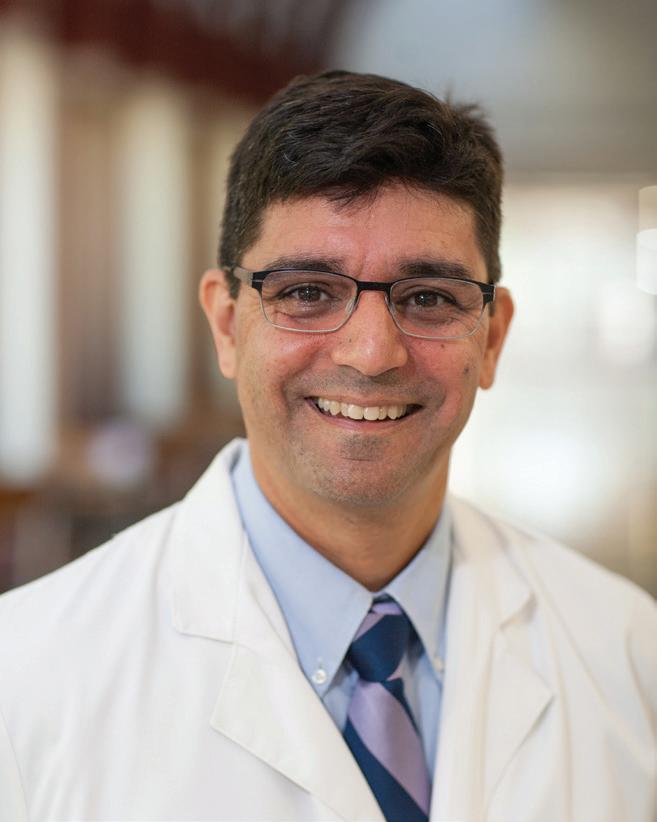
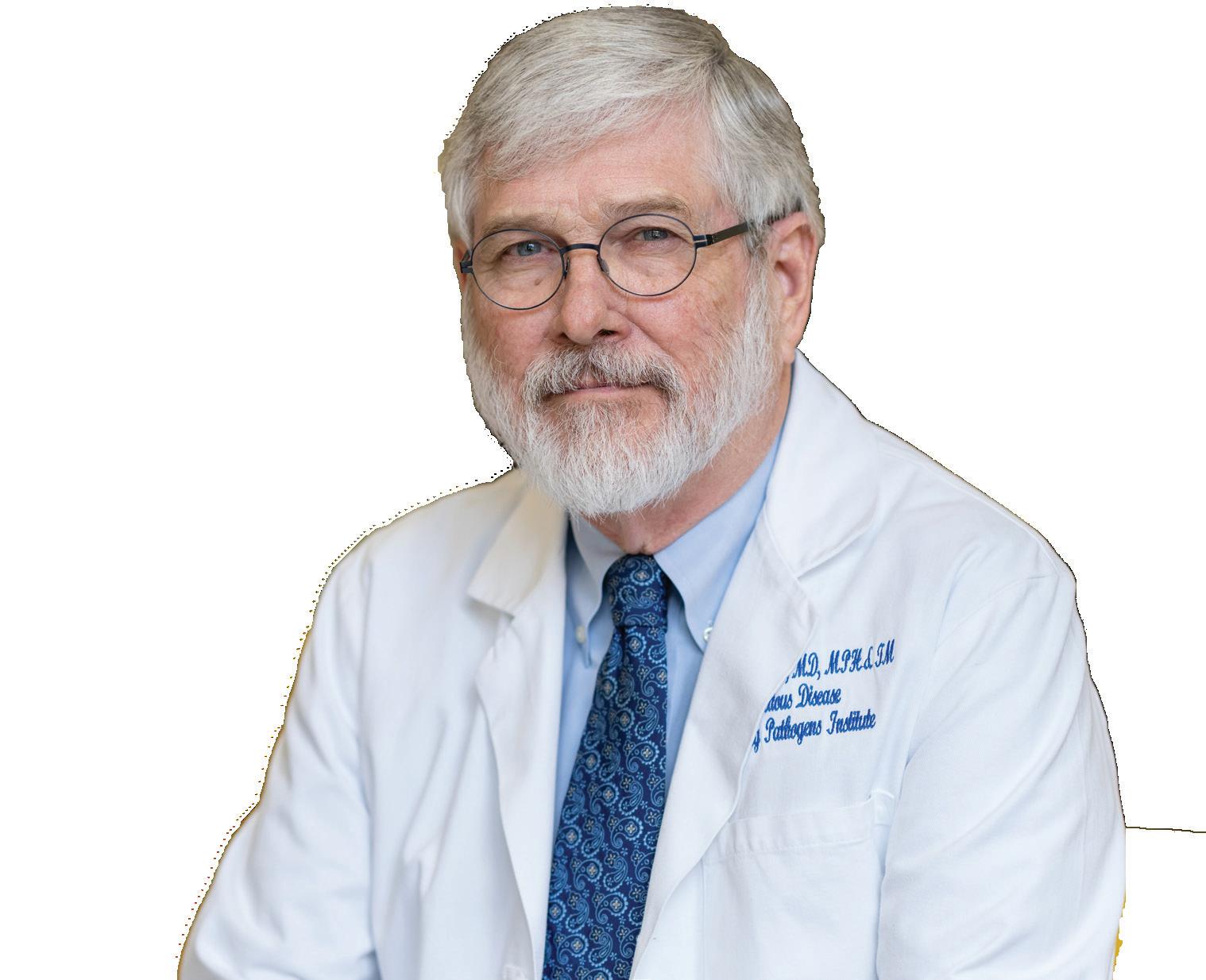
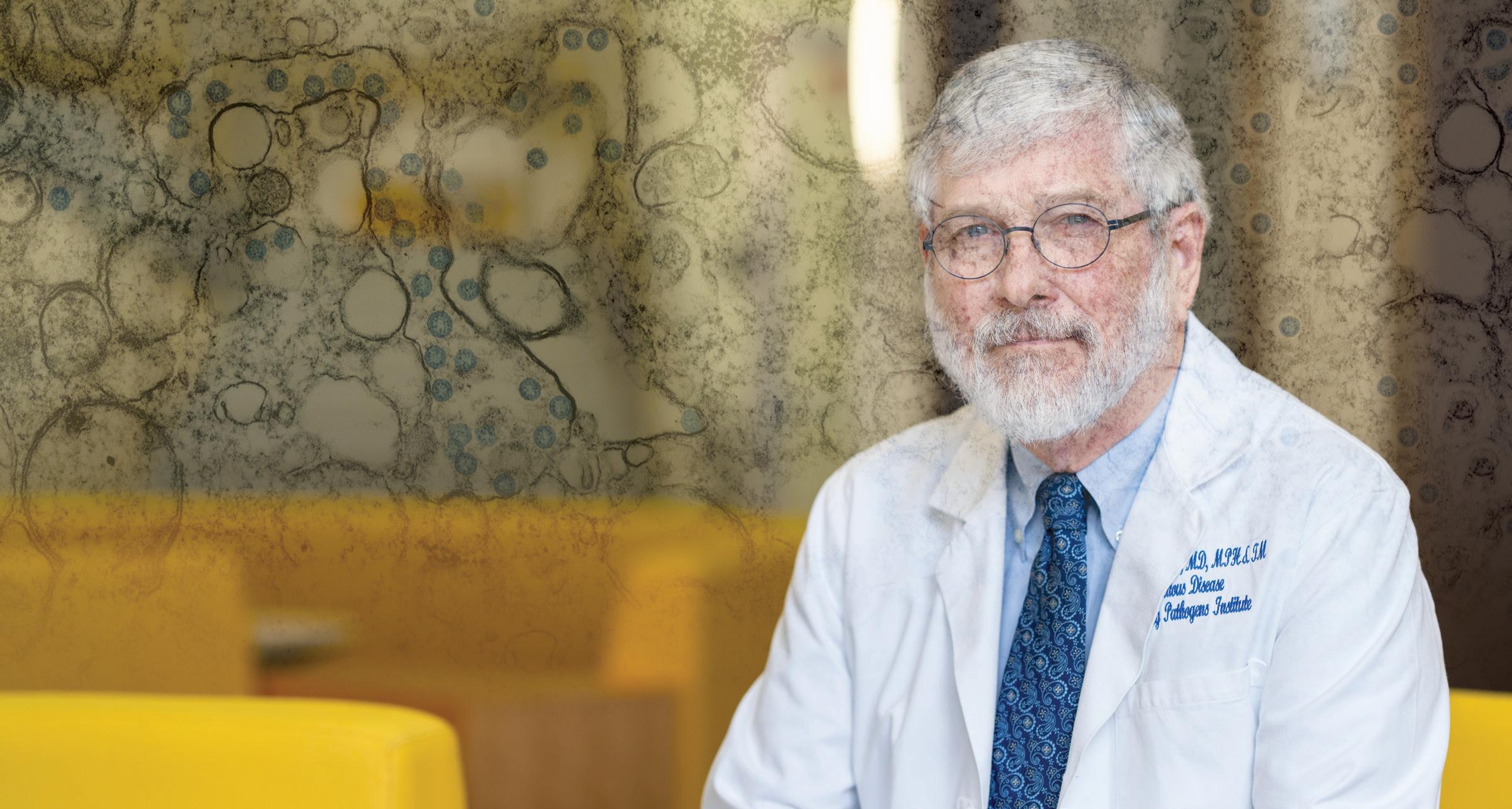
Protecting Communities
With the high-capacity laboratory in place, EPI helped spearhead or support seven different testing studies for high-risk populations. The first and most visible program took place at The Villages, a massive retirement
community in Sumter County, where symptomatic individuals could receive an FDA-approved COVID-19 test, and asymptomatic persons could be screened as part of EPI’s research activities.
Next, the EPI helped College of Medicine researcher Lisa Merck with a study that offered testing to city employees and emergency responders in Gainesville. Other community testing studies included farmworkers in Orange County, aquaculture workers and community members in Cedar Key, people within vulnerable neighborhoods in Jacksonville, school-aged children at P.K. Yonge Developmental Research School in Gainesville, and the homeless at Grace Marketplace, also in Gainesville.
At the pandemic’s onset, most of the surveillance studies used nasal swab testing to detect active infections. But over time, the studies added in serological testing to detect immune responses from past infections. The school-aged study also included a social science component designed to assess the pandemic’s effect upon the incidence
of depression, anxiety and obsessivecompulsive disorder. At the broadest level, the goal of these studies was to test healthy individuals to better understand the role played by people with symptomless infections in spreading the virus, and the degree of vulnerability of frontline personnel.
These community studies were created and executed by interdisciplinary teams, with EPI’s support, that included volunteer medical students, public health researchers, microbiologists, medical researchers, a law professor and an environmental toxicologist.
Molecular Targets
Researchers affiliated with the EPI are also hunting for molecular targets that could aid in developing drugs for COVID-19 treatments. A team with EPI members is harnessing the power of genomic editing to illuminate drug targets in human cells for the fight against COVID-19.
By taking advantage of the institute’s high-containment labs, the team is using CRISPR genome editing
15
"The whole point of our institute is that we can follow trails that go in various directions and do more than a single investigator could alone."
– J. Glenn Morris Jr.
Dr. Michael Lauzardo
UF's Emerging Pathogens Institute was created 14 years ago to develop an interdisciplinary approach to research on new biological threats.

Top: A team of volunteer UF Health medical professionals, together with personnel from The Villages Health primary care network, evaluated 2,280 people.

Middle: A technician processes COVID-19 samples at the Emerging Pathogens Institute.
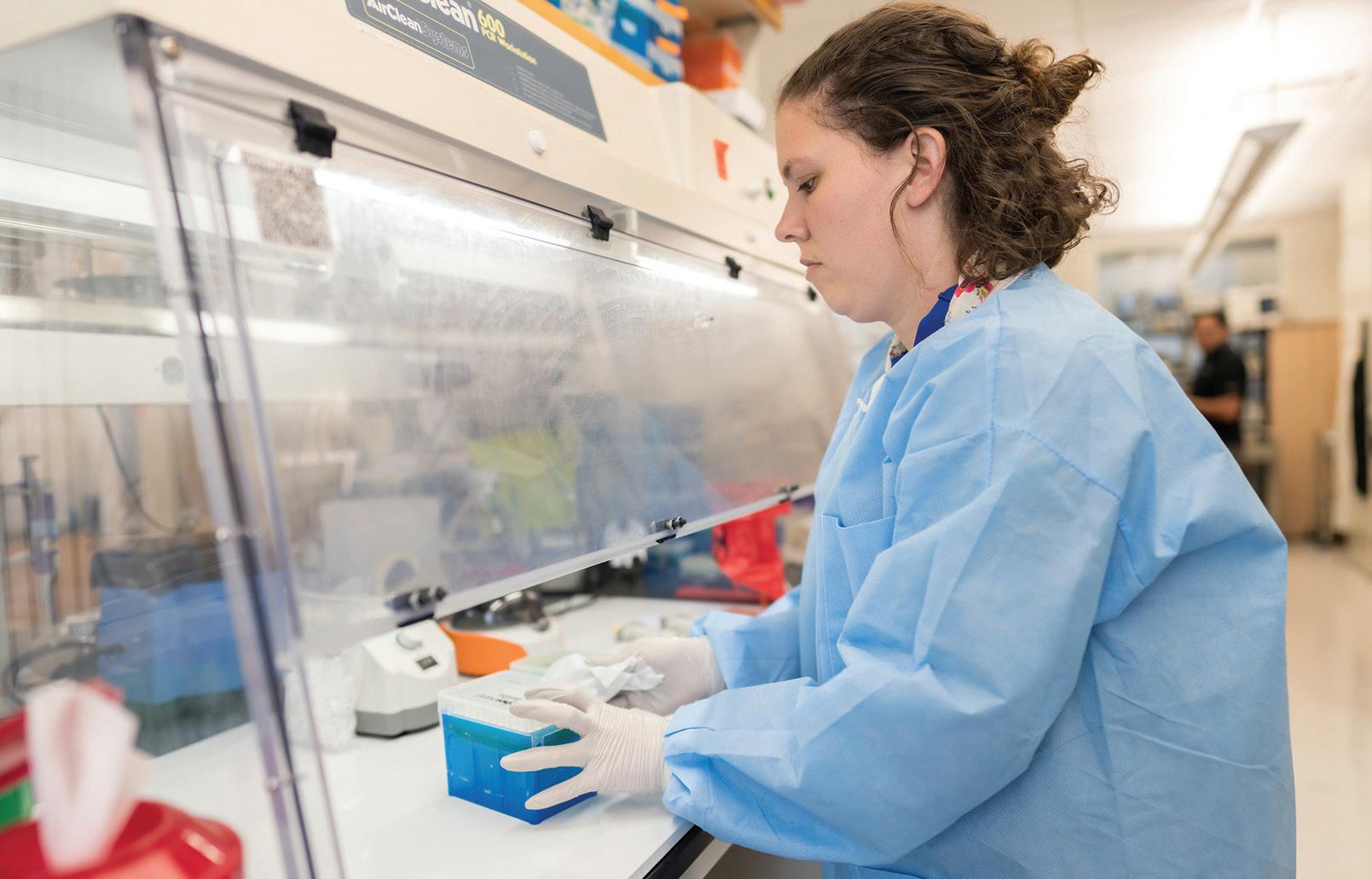
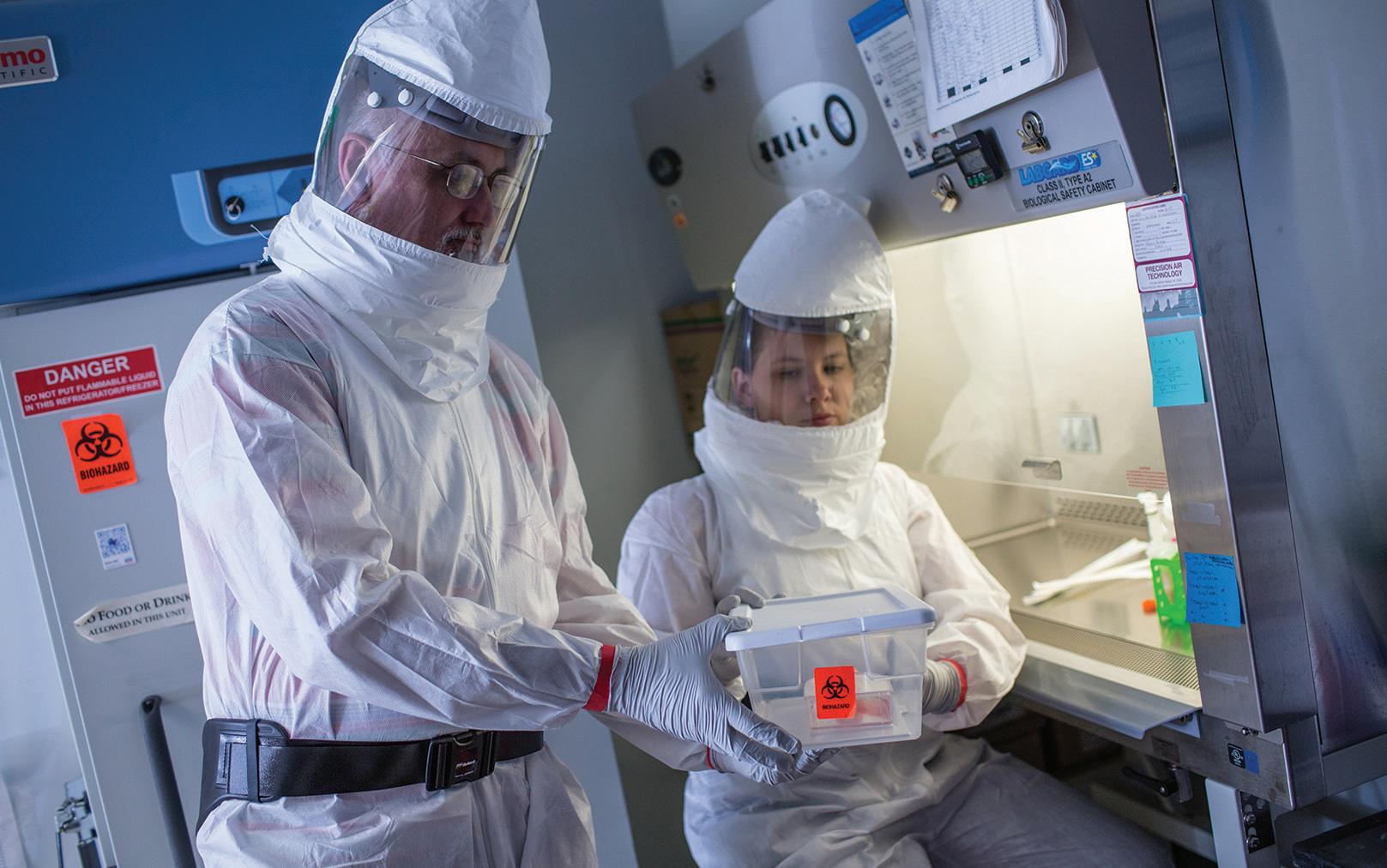
Bottom: Dr. John Lednicky and lab manager Julia Gibson have strict protocols in their lab for managing viruses like the SARS-CoV-2 virus that causes COVID-19.
techniques to screen human cell lines. Their goal is to discover genetic factors that either hasten or thwart infection by SARS-CoV-2.
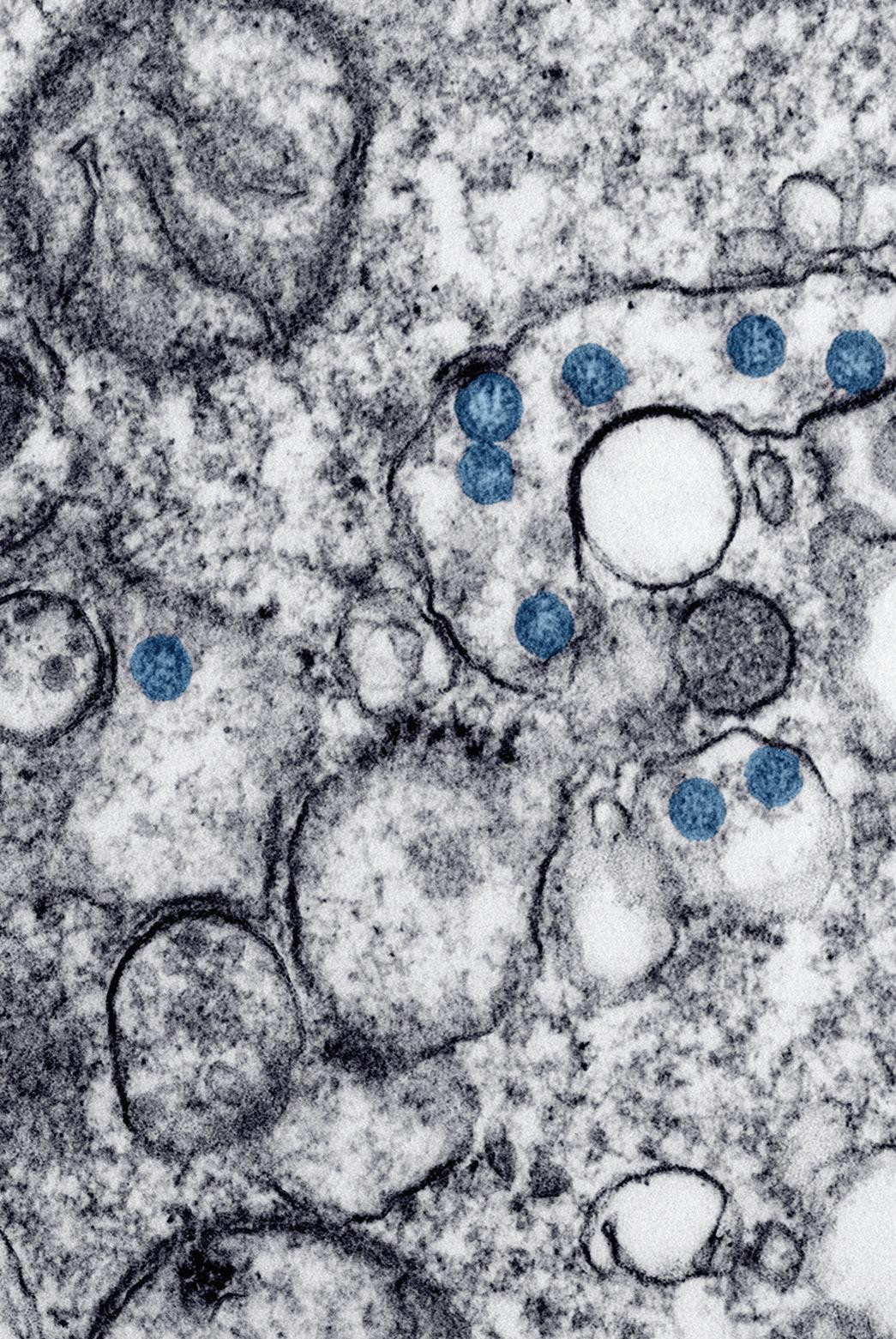
The team includes Christopher Vulpe, a professor in UF’s College of Veterinary Medicine, in collaboration with Stephanie Karst, a professor in the College of Medicine, and Mike Norris, a professor in the College of Liberal Arts and Sciences. Karst and Norris are EPI faculty.
Karst was already working on a project funded by the National Institutes of Health to identify host factors for other viruses when she contacted Morris about working on COVID-19 research. Morris connected Karst and Vulpe, and also suggested they work with Norris, who has an extensive background working in biosafety level III and high-containment labs.
16 Winter 2021
Jesse S. Jones Louis Brems
Mindy
C. Miller
They join researchers across the nation who seek a deeper understanding of how the SARS-CoV-2 virus causes disease and severe symptoms, knowledge that will help design therapeutic drugs.
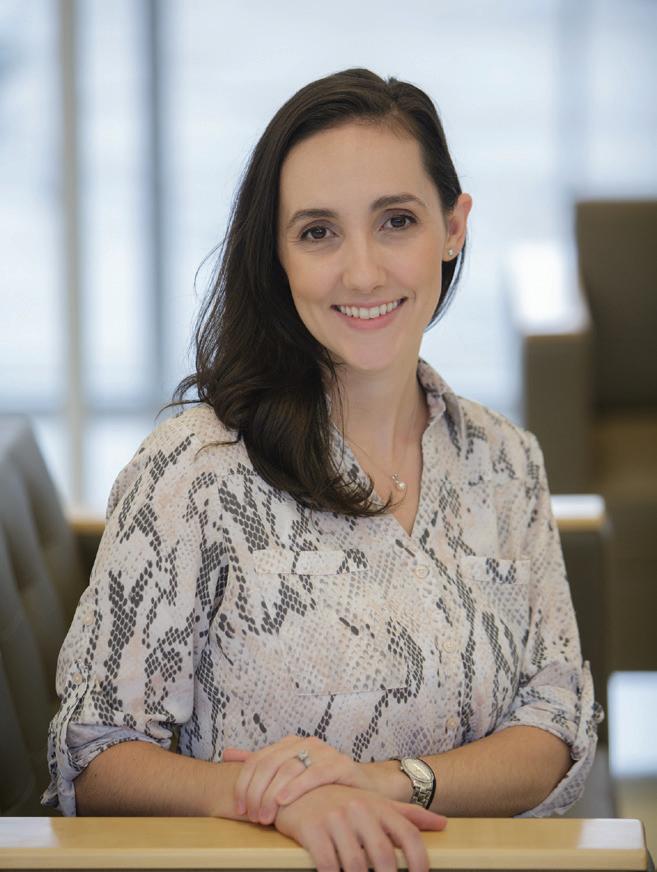
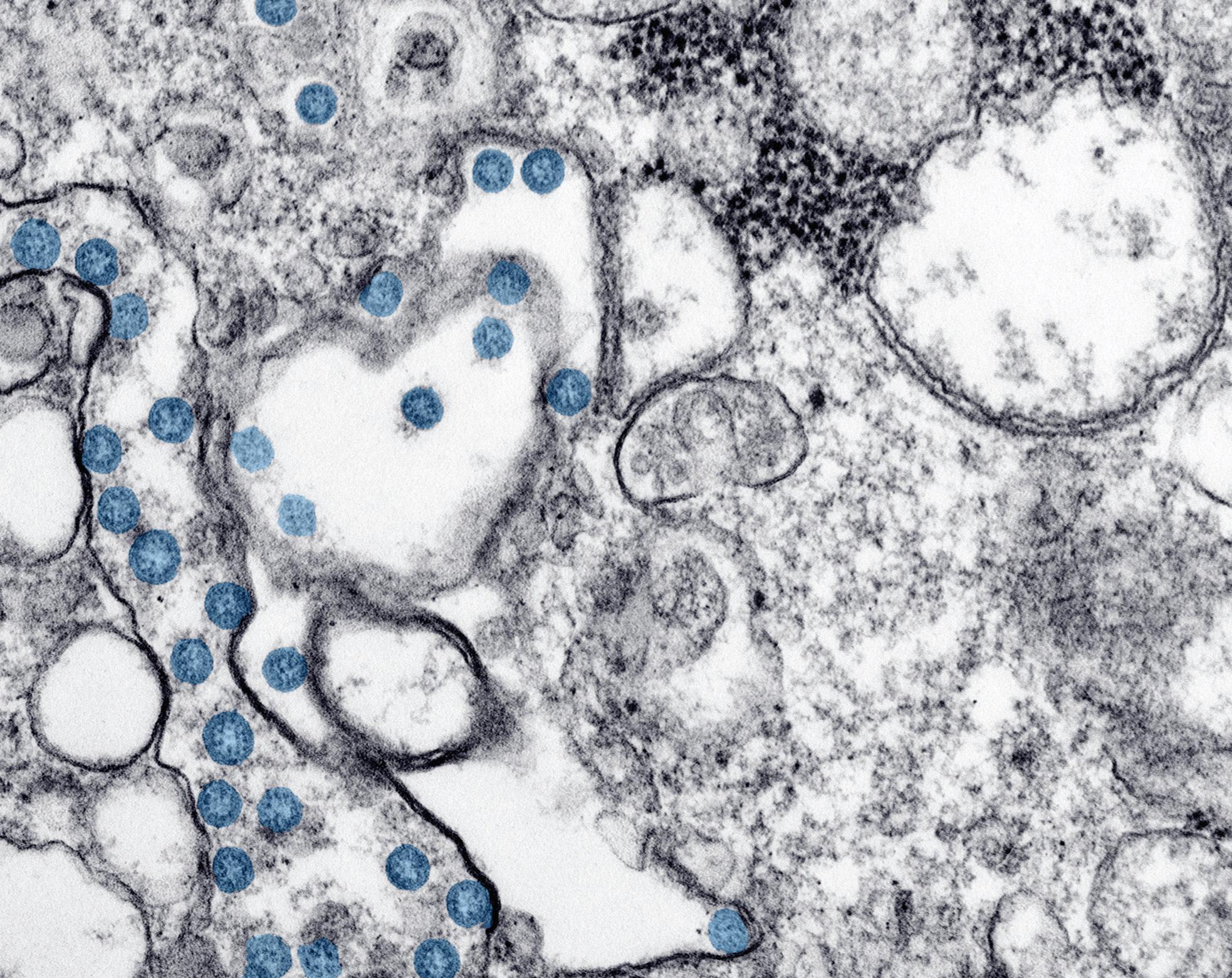
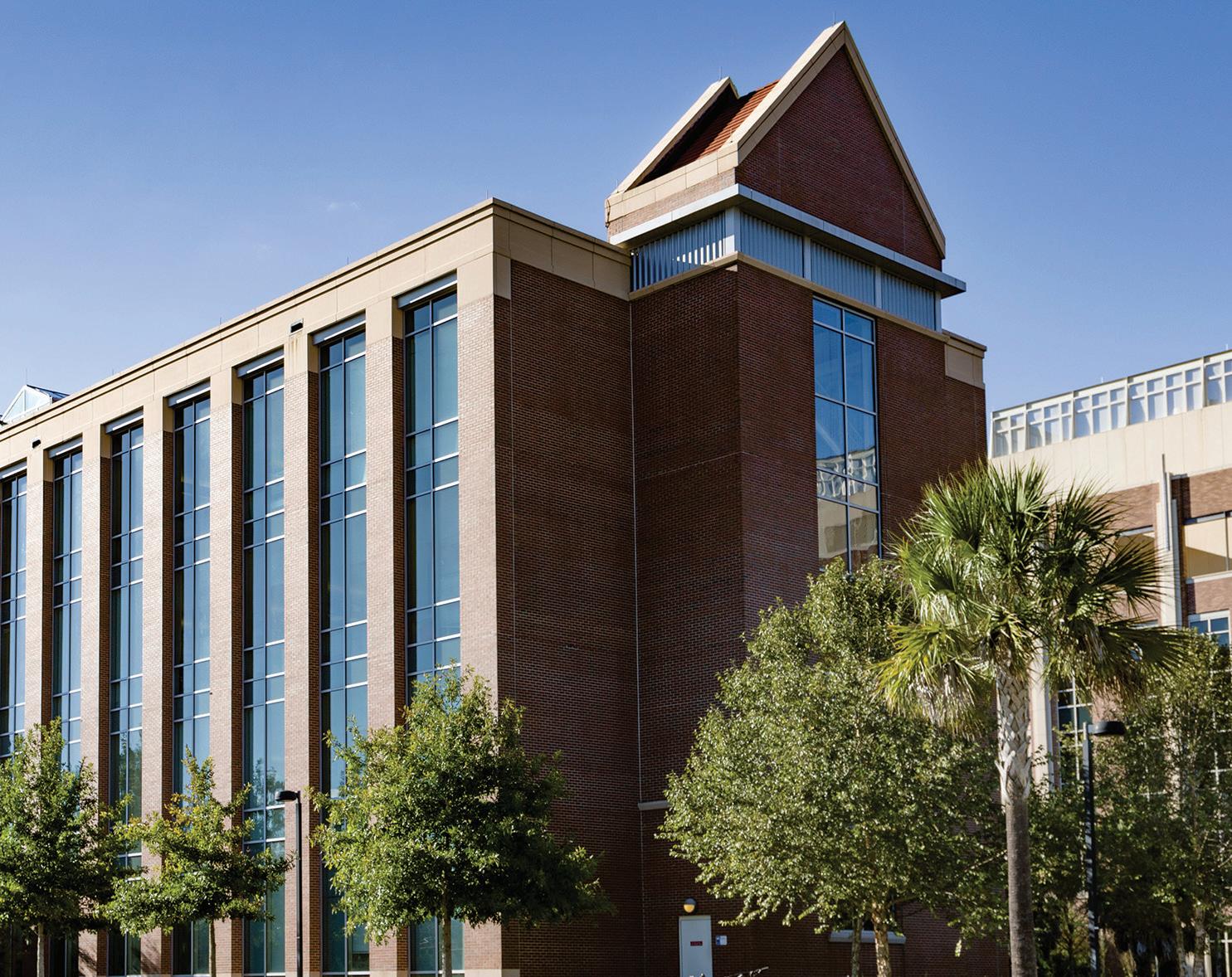
Modeling Better Outcomes
The EPI also supports researchers who use mathematical and statistical tools to create models of how infectious diseases are transmitted or move through a population. Models can be powerful tools for estimating how strategic interventions such as public
health strategies, vaccines or therapeutic drugs can help achieve better outcomes in a disease outbreak.
One such researcher is Ira Longini, a professor of biostatistics in the College of Public Health and Health Professions. An EPI faculty member, he serves as an adviser to both the U.S. Centers for Disease Control and Prevention and the World Health Organization, where he was a key member of the team developing an Ebola vaccine.
Longini contributes to the design of clinical and vaccine trials to ensure they are robust enough to deliver an optimal product that is both safe and effective. This year, he’s been busy contributing to models of the pandemic’s trajectory in the US with collaborators at the GLobal Epidemic And Mobility project (gleamproject.org). GLEAM models have accurately projected deaths from COVID-19 nationally several weeks in advance.
Longini and colleague Natalie Dean, also a member of the EPI and the biostatistics department, recently collaborated with Northeastern University’s Laboratory for the Modeling of Biological and Socio-technical Systems. The team analyzed what would happen if countries either “cooperated” or were “selfish” when distributing 3 billion doses of a hypothetical COVID-19
vaccine across the world. Their work shows that when nations cooperate on vaccine distribution, they can save far more lives globally than if wealthy nations focus only on their own citizens. The Bill & Melinda Gates Foundation featured this model in its 2020 Goalkeepers Report.
Thomas Hladish, in the College of Liberal Arts and Sciences, worked with Longini in the spring and summer to produce models published on EPI’s website that projected the pandemic’s trajectory in Florida. And Burton Singer, a mathematician in the College of Liberal Arts and Sciences, collaborated with researchers from the Yale School of Public Health to project hospital and intensive care unit capacity in the U.S. His most recent work, under peer review, analyzes optimal strategies for testing and quarantine strategies to bring the pandemic under control.
What’s Next?
Once the current pandemic is controlled, Morris plans to continue his approach of investing in interdisciplinary teams to prepare for the next novel infectious disease.
A pandemic flu is a perennial threat on many people’s radars due to its fearsome transmission levels, but the next one could also be a lesserknown filovirus akin to Ebola, a new mosquito-transmitted virus, or even a highly transmissible but drug-resistant bacteria. Though he can’t shake a crystal ball and predict the future, Morris’ approach at the EPI has shown the inherent value of investing in a broad and interdisciplinary research agenda over time.
“This is what we are here for,” Morris says. “Investigating what makes pathogens tick is what our people do best."
J. Glenn Morris Director, Emerging Pathogens Institute jgmorris@epi.ufl.edu
Related website: https://epi.ufl.edu/
17
"Within the sphere of the university, the Screen, Test & Protect program has worked very well to limit the spread of COVID-19 at UF."
– J. Glenn Morris Jr.
Natalie Dean
Learning Online
Online reading resources for teachers

Holly Lane never anticipated long-term disruptions in education when the pandemic started forcing schools to close last spring.
“When schools first shut down back in March, the thought was, ‘Oh, kids will be home for an extra week after spring break,’” said Lane, director of the University of Florida Literacy Institute, or UFLI.
But she knew that even if online school only lasted a few weeks, teachers would need guidance in how to keep their students from falling behind, “so we put together a Parent Resource Hub to provide information and activities for home learning.”
UFLI is dedicated to improving literacy outcomes for students who struggle to learn to read and write through teacher professional development. Among the institute’s latest efforts is the James Patterson Literacy Challenge (JPLC) a collaboration with the best-selling author and his foundation to address Florida’s literacy crisis and double the state’s literacy rates.
Among the resources JPLC has provided since 2018 are robust professional development curricula and online programs designed to increase the capacity of reading teachers. Recognizing the growing need for resources and tools to support online learning environments, the JPLC team created materials for teaching reading online, and the Virtual Teaching Resource Hub was born.
“When it became evident that kids would be home for much longer, we wanted to help teachers in our JPLC schools be as effective as they could be as they were thrust into teaching reading online most for the first time,” Lane said.
Working with JPLC schools during emergency remote learning, Lane saw that while there were professional development programs available about precautions for the coronavirus and using online learning management systems, there was a gap in teacher education resources tailored to online reading instruction.
“No one was helping teachers figure out how to actually teach reading online,” Lane said. “Through our use of the hub in the spring, we had figured out a lot of the ins and outs, so we thought we should help more teachers learn what we had learned.”

The hub has resources ranging from lesson templates and activities to tips on managing behavior and maintaining student attention to promote literacy learning and support struggling readers via remote learning methods. The team has also collaborated with UF’s Digital Worlds Institute to create several innovative apps to support development of word reading skills. All of the materials can be used face-to-face, as well.
Although the tools provided in the hub were originally intended for schools involved with the literacy challenge, Lane and her team quickly realized that other schools and teachers could utilize the resources in their classroom so they made them available for anyone to use and adapt for their classes.
“In classroom-based instruction, teachers are always having to create materials to use. They are used to doing that,” Lane said, “but creating materials that can be used for remote teaching is not something most teachers know how to do. Why would they?”
The team at UFLI knew that they wanted teachers to have appropriate, high-quality, evidence-based materials at their fingertips that were flexible
18 Winter 2021
B y M acayla B ricarell
“When we were planning the webinars, we thought it would be wonderful if we could fill up all the seats in our 1,000-seat Zoom license,” Lane said. “But, once we posted the announcement on the UFLI Facebook page, we filled up those 1,000 slots in less than two hours.”
Within a week of the first webinar premiering it had over 70,000 views from teachers across the globe. UFLI’s website analytics indicate the webinars have been viewed as far away as Australia and the Philippines and has “raised the profile of the institute on the global stage,” Lane said.
The content on the hub is aimed toward students at the elementary level, but older students who are struggling with reading will be able to benefit as well.
munity to help each other be better reading teachers and it is very cool to see,” Nissenberg said. The reading education community has shown overwhelming support for the resources UFLI continues to provide for virtual literacy education throughout the move to remote learning and as schools transition back to face-to-face classes.
“The response we’ve received has been incredibly positive, and it has more than confirmed our hunch that this was a real need,” Lane said.
Laura Zimmerman, a Baltimorebased reading specialist, found UFLI on Facebook when they were offering free training over the summer. She’s found that the resources like the virtual letterboard UFLI created and now the Facebook community have been
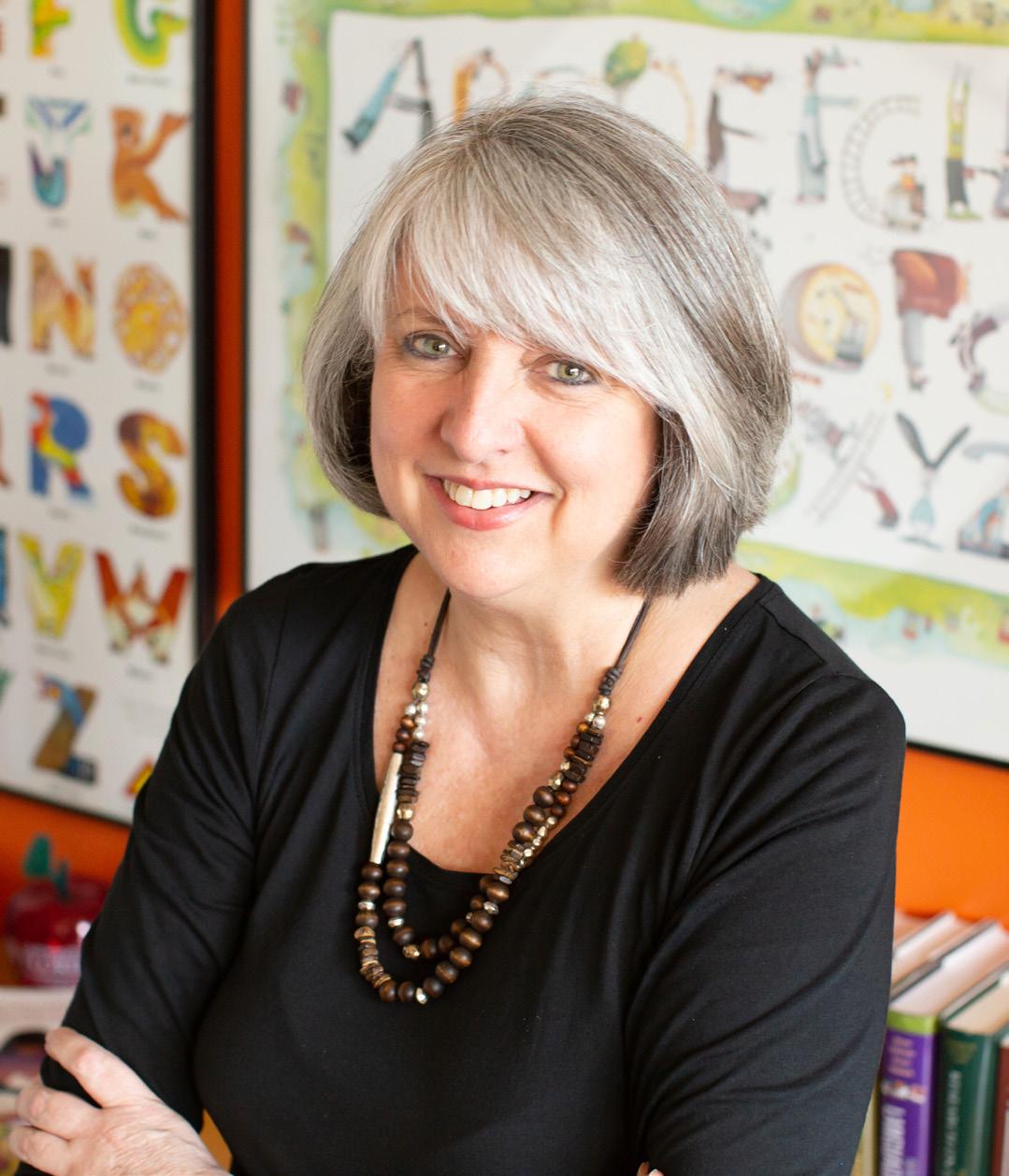


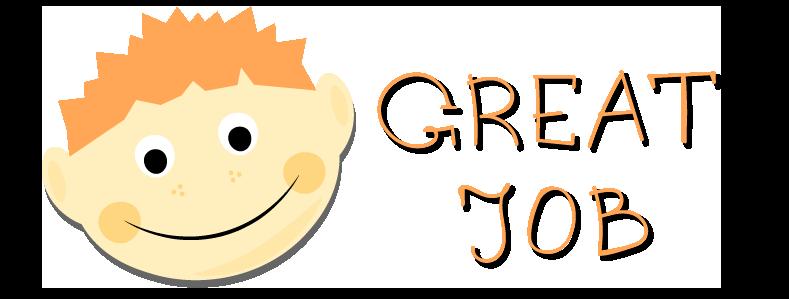
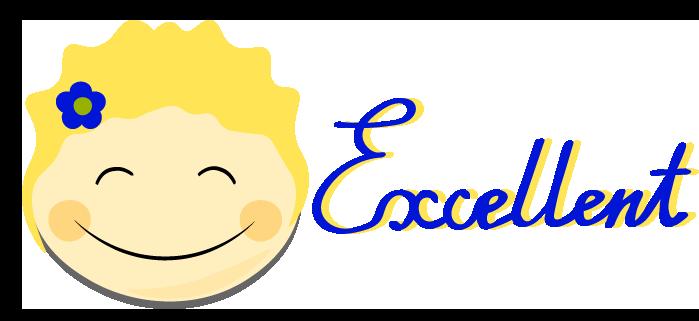

Resource Hub.
Like Zimmerman, Kuljerich felt that learning the format to teach literacy online has been the biggest challenge in the move to online learning. The Google slides and teaching examples helped her feel more comfortable throughout the transition.
“Thank you to UFLI and their interns for making online resources available to reading intervention teachers like me,” Kuljerich said. “With your help I had no problem starting the school year online. I am forever grateful to UFLI.”
 Holly Lane Associate Professor of Education hlane@ufl.edu
Holly Lane Associate Professor of Education hlane@ufl.edu
Related website: https://education.ufl.edu/ufli/
19
First-Grade Lesson Templates
TOURISMECONOMY
Travel stoppage has massive ripple effect
Florida’s economy so reliant on tourism has been particularly hard hit by the pandemic. Tens of thousands of workers at theme parks, on cruise ships, at airlines, airports and the countless other businesses that support them have been laid off as international and domestic travel ground to a halt last spring.
The loss of that business directly affected Florida’s next biggest industry agriculture as farmers lost some of their biggest customers, the restaurants in those parks and on those ships.
UF researchers across campus quickly turned their expertise to understanding the economic impact of the pandemic, and to developing ways to mitigate losses now and in the future.
Tourism Upended
Travelers have gone through several stages of concern as the pandemic grew, then waned, then grew again, according to a series of 30 surveys totaling more than 22,000 people by UF’s Tourism Crisis Management Initiative.
The survey has been conducted weekly since the beginning of the year, and while initial concerns focused on avoidance of international travel, then domestic travel, by October the surveys showed people were either avoiding travel altogether or making sure they have contingencies, said Lori Pennington-Gray, director of the initiative and a professor in UF’s College of Health and Human Performance.

“Travel anxiety is linked to stages
that are occurring in the progress of the virus,” Pennington-Gray said. “When we as a nation were in lock down, the travel anxiety was at its highest. As we saw cases starting to decline, we saw travel anxiety decrease. As of the most recent data collection, we see that travel anxiety is increasing again as we climb in the number of cases nationally.”
In mid-October, more than 66% of respondents said they were more likely to take a staycation than in the past, up from 54% in May.
“Staycations are more than just staying home and not traveling,” Pennington-Gray said. “They are engaging in travel closer to home, participating in day trips and drive tourism. As one would expect, this type of travel is at a higher level than ever.”
Over 74% of the October respondents said they were more likely to take a trip that doesn’t require flying, up from 57% in May.
“Drive tourism has been a type of travel that we have seen in the past. It was a response to 9/11, the 2008 global recession and now COVID-19,” Pennington-Gray said. “We are typically seeing shorter trips, but there are also a growing number of people who are buying RVs, camping, taking longer trips and exploring our parks.”
When people do travel, more said they would get travel insurance and use a travel agent.
“As we saw at the outbreak of the pandemic, many travelers were stranded in foreign countries or on cruise ships,” Pennington-Gray said. “U.S. travelers
are aware that this pandemic is fluid and that things are still continually changing. They are more aware of the need for travel insurance to help with itinerary changes, evacuation or other needs that may arise due to a change in government policy during their trip.”
She added that in addition to a growing interest in travel insurance, “we are seeing the growing need for a travel agent to help to coordinate the entire travel itinerary, particularly in the case of a change due to increased cases and potential closing of borders.”
More than 67% said they were more likely to use a travel agent, up from 49% in May.
Travelers are also holding travel companies to a higher standard when deciding which company to use.
“The U.S. travel market expects more safety precautions than ever from
20 Winter 2021
Lori Pennington-Gray
the travel industry. Travelers are looking at websites for information, making sure that there are policies surrounding social distancing, wearing masks and sanitization practices,” PenningtonGray said. “We think this is the new normal and that these expectations of safety are here to stay. Although the context of safety may change, the responsibility of the industry to provide information to the consumer will not.”
Agricultural Angst
More than 70% of Florida’s large farms sell to the service industry, which includes theme parks, hotels, restaurants and cruise lines, so when COVID-19 brought the tourism industry to a crashing halt last spring, farmers around the state were left with millions of pounds of fruits and vegetables that were at peak harvest.
Florida farms took losses that are hard to comprehend. One grower plowed under 2 million pounds of green beans and 5 million pounds of cabbage because there was nowhere to send the produce before it spoiled. Another farm dumped 100,000 pounds of tomatoes in one week.
“COVID-19 hit these growers at the worst possible time,” said Catherine Campbell, a UF/IFAS assistant professor of community food systems. “It was our peak harvest season, and the market fell out. Florida supplies most of the produce east of the Mississippi River in the spring and it all just stopped. It was bad for everyone, but
producers in other parts of the country were at planting time, not harvest time. For our producers, they had already reached the maximum investment on those crops paid to plant, maintain (spray, irrigate, fertilize, etc.) and in many cases they already harvested crops then they couldn’t sell them.”
While the losses were huge, UF/ IFAS experts, industry groups, and state and regional organizations such as the Florida Department of Agriculture and Consumer Services and the Florida Farm Bureau Federation developed a variety of programs and resources to connect Florida growers to buyers.
Retailers around the state committed to purchasing more Florida and U.S.-grown produce, but farmers also marketed direct to consumers. One packing house in Homestead opened on weekends for consumer sales and sold more than 120,000 pounds of vegetables.
“This event was a ‘cue to action’ to develop support systems that make it possible for producers to make these kinds of changes in market channels. Their profits were probably not even close to breaking even, but at least it’s a help.”
Despite substantial losses, producers also harvested and transported produce to food banks and other hunger-relief organizations to meet the increased demand from those in the community who were unemployed.
“These programs can help producers, large and small, find buyers when their traditional supply chain breaks
down,” Campbell said. “The hope is that this strategy will provide a foundation to support food system resilience in the event of future public health emergencies and natural disasters. It can also help move product instead of it going to waste. If we know where there is food and where people need it, we can mobilize it and get it to those in need.”
Consumer Confidence
Florida’s Consumer Confidence Survey, conducted monthly by UF’s Bureau of Economic and Business Research (BEBR), was at a 20-year high of 102 in February, but it plummeted a record 13.5 points in March as coronavirus caused business in many of Florida’s most important industries to slow or shut down entirely.
“The decline in consumer confidence was fueled by growing pessimism … due to the economic damage brought by the coronavirus outbreak,” said Hector H. Sandoval, director of BEBR’s Economic Analysis Program.
Confidence clawed its way back in fits and starts throughout the summer, but by September it had only regained half of what was lost in March.
The index used is benchmarked to 1966, which means a value of 100 represents the same level of confidence for that year. The lowest index possible is a 2, the highest is 150.
Tory Moore, Perry Leibowitz and Joseph Kays contributed to this article.
21
STAY? GO? TRAVEL ANXIETY 54% / 66% 57% / 74% 49% / 67% May May May Oct. Oct. Oct. Staycation? No Flying? Travel Agent?
Understanding COVID-19
UF epidemiologists using AI to understand coronavirus
UFresearchers are using machine learning to predict future changes in the novel coronavirus.
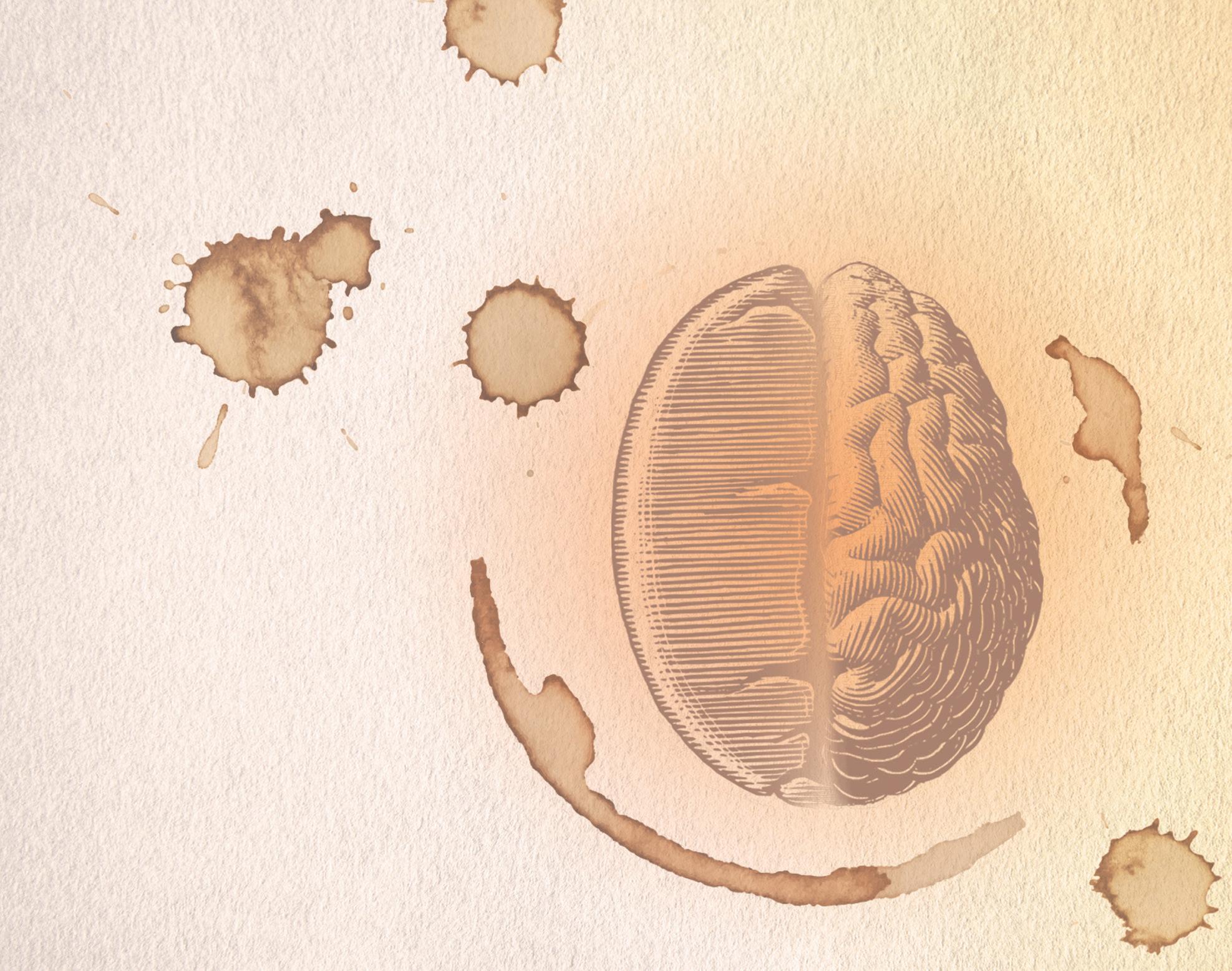
Marco Salemi, a virologist and professor in the Department of Pathology at the UF College of Medicine, wants to know how this new strain evolved and what algorithms can do to predict the future of an emerging pathogen like coronavirus.
Along with Mattia Prosperi, an associate professor in the Department of Epidemiology at the College of Public Health and Health Professions, Salemi has worked to develop what
Coffee Connections
Coffee houses, customers seek to stay in touch
Anthropology doctoral researcher
Chris LeClere was deep into research on coffee houses as third places not home, not work, but special and essential nonetheless when the pandemic rocked the coffee house scene. The result wasn’t just caffeine withdrawal.
“That barista I see every day…if I don’t see that person, my day actually is a little less complete,” LeClere says.
As people queued up in drivethrough lines or in socially distanced walk-up lines, LeClere tweaked his research and began looking at how coffee houses were adapting to the pandemic.
Instead of observing coffee house life in person, he began observing virtually. Coffee houses ramped up their social media accounts to maintain a connection with customers. LeClere estimates he analyzed 380 Instagram posts from coffee houses around the country.
LeClere says coffee houses’ first forays into social media focused on reassuring customers about health concerns and contamination. When it was clear
the disruption might be existential, posts went from once or twice a week to three or four times a day.
“We’re wearing gloves, we’re wearing masks, use this app to get our coffee, here’s the delivery service we’re using,” LeClere says. “Coffee delivery didn’t used to be a thing. But it is now.”
On Facebook and Twitter, coffee houses promoted new menu items and drinks and highlighted baristas. The posts that got the biggest likes were those promoting connection, LeClere says, like one from Subculture Coffee in Delray Beach: “remember this guy; he’s still here.”
Coffee houses that maintained connections with regulars, even in nontraditional ways, are the ones that will be standing when social distancing eases, LeClere says. But even the social media pros will need logistical help to offset supply chain disruptions, he says, because coffee passes through 30 different hands before it ends up in your latte.
With the exception of Hawaii, coffee is not grown in the United States.
they call evolutionary-informed machine learning epidemiology.
They are working to better understand the implications of the virus by using phylodynamic analysis, the way that epidemiological, immunological and evolutionary processes act, and combining it with machine learning.
“We have been constantly monitoring the number of viral sequences available,” Salemi said. In just a few weeks’ time, researchers like Salemi have had an increasing amount of information become available to them as doctors around the world manage thousands
Coffee becomes a local product, by USDA standards, when it is roasted, which changes its point of origin, and that “crafting” of coffee creates a locavore-style connection. Disruptions in getting coffee to roasters could result in smaller suppliers dumping coffee they cannot move down the supply chain.
LeClere’s history with coffee started young at Regency Square Mall in Jacksonville. At 11, he saw the film “Hudson Hawk,” in which Bruce Willis gets out of jail and makes a beeline for a coffee house to satisfy a cappuccino craving. Each much-anticipated cup, however, is interrupted by a plot twist, until the end, when he finally gets the cappuccino, fade to big swig. The young LeClere walked out of the movie and across the mall to Barnie’s Coffee & Tea, which listed a cappuccino at $3.
“I had $3, so I thought I’d see what it was all about,” LeClere says. “I fell in love.”
During an 18-year career in broadcast television prior to academic life, he drank four or five cups a day and still does. When he settled on studying
22 Winter 2021 E tracts
of patients with the virus. “Probably within the next month we will already have sufficient information to at least try some of our computer intelligence algorithm.”
Salemi and his colleagues use global databases like GISAID, which hold updated information on new genomic sequences emerging from labs around the world. While these databases are a great starting point, details like geographic location and date of a diagnosis can tell researchers a lot more about the timeline of the epidemic.
With patient confidentiality in mind, more accessible details on each case could make a difference in how
much researchers can use AI to contribute to solutions to the COVID-19 pandemic.
“What was the clinical status of the patient? Was this a mild infection or a symptomatic infection?” Salemi asked. “What is really crucial right now is to start augmenting this genomic database with extra information about very basic things.”
In the past , certain coronavirus strains caused an outbreak of SARS (Severe Acute Respiratory Syndrome) in China in 2002 – 2003, and cases of MERS (Middle East Respiratory Syndrome) in Saudi Arabia in 2013, among other diseases. The latest out-
Gator Country
Wildlife took over campus
break of COVID-19 indicates that the virus has changed since it first became apparent.

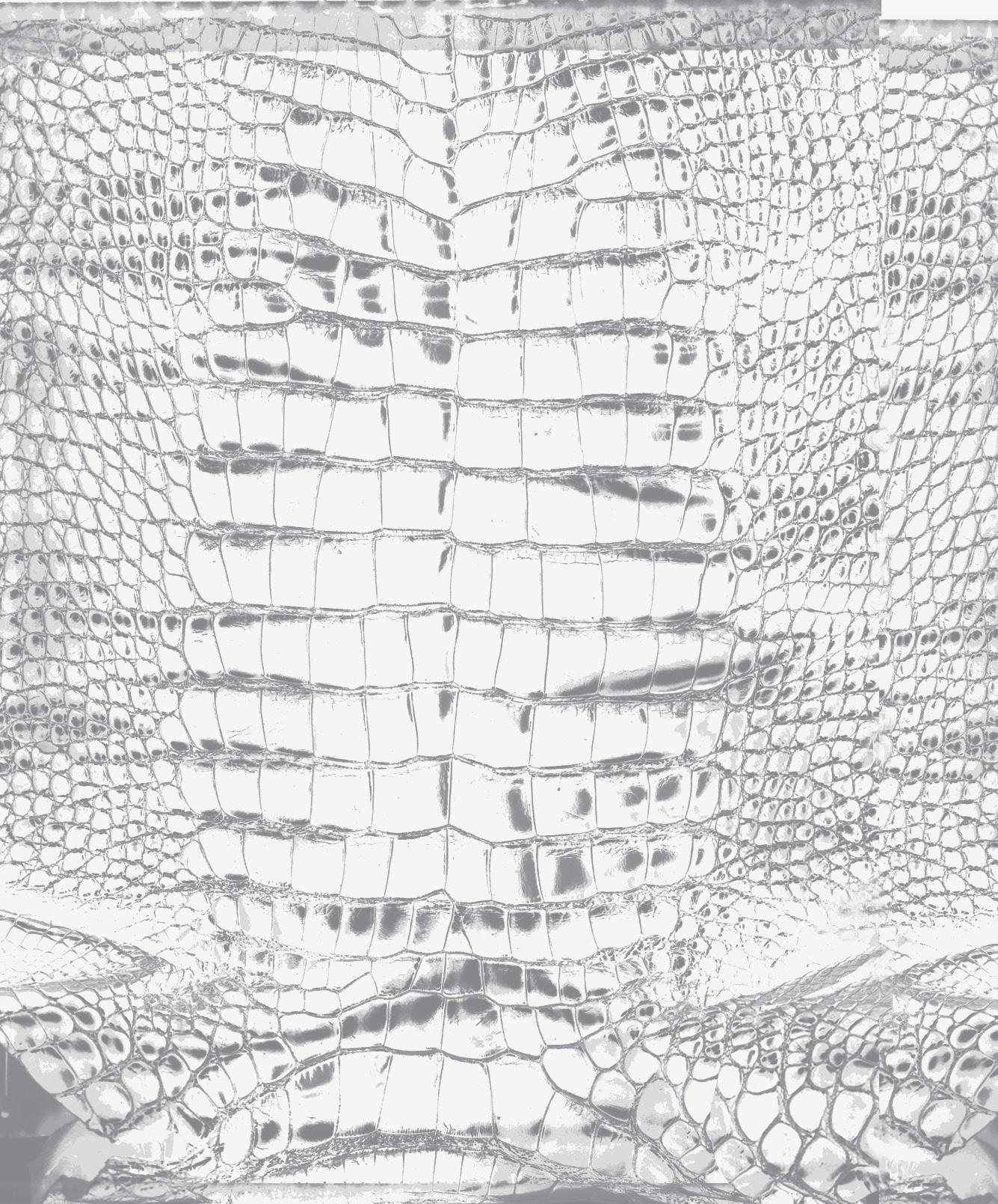
“The new strain is related, but substantially different,” Salemi said. “Obviously something has happened that has basically led to the emergence of this new lineage.”
He added: “AI algorithms are very powerful, but require a large amount of data. And even when the data are available, results still will require some computational time."
Karla Arboleda
coffee and coffee houses, he knew he would need more expertise than his prodigious consumption, and he shelled out almost $1,000 to get a level two barista certification.
His grandmother stopped teasing him about spending time in coffee houses when Starbucks bought data from two studies. The first on who buys pumpkin spice lattes (“white dudes like me”), and the second on how patrons use Starbucks’ space. Starbucks, he says, wants to be your living room.
During the shutdown, we were all stuck in our living rooms or guest rooms, bedrooms, at our dining room tables craving our nook in a coffee house.
Coffee, LeClere says, is both a beverage of modernity and a beverage of nostalgia. We grab a cup as we go on our busy way, the memories that go along with the cups adding up over the years.
“Nostalgia is about an imagined past we want to base the future on,” LeClere says. “We sit around, we have coffee. We’re connecting. We’re going back to where we were.”
Cindy Spence
As the university shut down in the spring, the campus went wild.
The shutdown coincided with alligator mating season, and the reptiles had all 2,000 acres to gallivant in search of romance. The males, says UF urban ecologist Mark Hostetler, have wanderlust in the spring, and like to roam from one body of water to another.
And alligators weren’t the only creatures claiming territory. With less human traffic, shy species lizards, turtles and tortoises, birds and even the occasional red fox had more time for basking in the sun and traversing from one green space to the next.
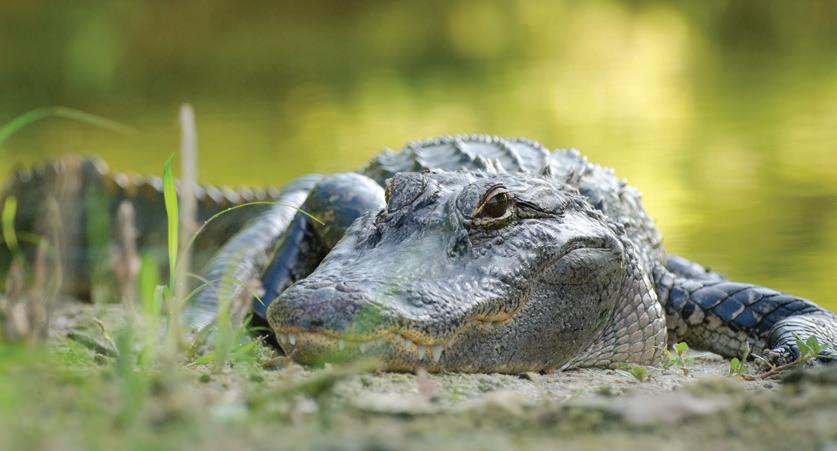

Spring is peak migration season, so the hundreds of bird species that travel through Florida found the UF campus a bit more hospitable.
“Even a one-acre patch of woods or tree canopy helps,” Hostetler says. “These birds need places to refuel as they go from South America, Central America and the Caribbean to their northern breeding grounds.”
Migrating species great crested flycatchers, indigo buntings, Baltimore orioles, black and white warblers usually rest at night away from the light. Although security lights stayed on, many offices, labs and residence halls emitted less light, creating a more welcoming environment for nocturnal migrating species and resident owls.
Noise pollution, too, was reduced.
“With less noise, singing birds and croaking frogs can communicate better,” Hostetler says. “They can hear each other and find mates and set up territories.”
Although most campus creatures enjoyed the human hiatus, some likely welcomed the reopening.
“The squirrels and raccoons probably got thinner,” Hostetler says. “They’re missing out on the daily buffet of food scraps from the students.”
Cindy Spence
23
Eric Zamora
From Academic to Real Life
History and current events collide in medical geography classes
Mosquitoes also serve as vectors for disease, biting an animal that carries a disease and transmitting it to humans with a bite. Zika, yellow fever, dengue and malaria are all vector-borne diseases.
Hamerlinck says the class discusses which pathogens are involved bacteria, viruses, parasites and which hosts are involved, such as bats, birds or chimpanzees.
“If a disease jumps into human populations because it is spilling over from an animal population, what factors might have influenced that jump?” Hamerlinck asks.
Hamerlinck asks students to engage in scenario planning, figuring out where to devote public health dollars as they learn about new public health threats week by week. Often, students choose to focus on diseases that threaten human populations right now.
Geography lecturer Gabriela
Hamerlinck debuted a new class for Fall 2019: Pandemics. As the semester began, she was lecturing about history the plagues of prehistory and the Black Death.
By the end of the semester, current events caught up with her lesson plan. And as she began spring semester, teaching People and Plagues, the headlines could not be ignored.
“We sort of scrapped the syllabus for a while and focused on the coronavirus,” says Hamerlinck, whose specialty is medical geography. “I wanted my students to see and apply what they were learning to this real-life scenario.”
The history of pandemics and plagues is long. Hamerlinck says several factors determine whether an outbreak, a small-scale incidence of disease, blossoms into an epidemic, a larger scale outbreak with incidence of disease beyond a normal threshold level. And then there are pandemics, which sweep over the world.
“Reaching a pandemic level is terrifying,” Hamerlinck says.

Modern life and life in bygone days share some factors that lead to pandemics. But modernity has magnified those factors and added a few. Society is more mobile, people travel more for work and pleasure, world population is growing sending humans into formerly wild habitat where they can encounter novel pathogens, and then there’s climate change. The stage is set, it seems, for a pandemic.
“All things considered, it is quite easy for diseases to spread globally really quickly,” Hamerlinck says.
The global population today is larger with more people crowded into mega cities and in closer proximity, making it easier for disease to spread. The growing population also means humans are encroaching more than ever on new environments, creating pastures and farmland where once there were few humans. The wild animals encroached upon, in some cases, are zoonotic reservoirs of disease.
“The future threat doesn’t feel strong enough, like something to be worried about yet,” Hamerlinck says.
What changes that? Talking about coronavirus. The current pandemic, she says, has more students thinking about public health measures with a main focus on research and education.
Flu season gives Hamerlinck a chance each year to talk about proper hygiene to prevent the spread of viruses and bacteria. Other diseases, too, have surged: dengue in the Philippines, cholera in Yemen, Ebola in sub-Saharan Africa. Polio eradication efforts in Afghanistan have been put on hold to deal with the coronavirus.
“There are worldwide impacts beyond just people being sick with coronavirus right now,” Hamerlinck says.
Hamerlinck will have plenty of new material for the syllabus for coming semesters.
“There are lessons learned from previous pandemics, so I’m really curious to see what happens,” Hamerlinck says. Cindy Spence
24 Winter 2021 E tracts
Estimates put the death toll for the 1918 flu pandemic at 50 million globally.
Credibility During COVID-19
In a year unlike any other due to COVID-19, who can you trust when it comes to real-time information regarding a global pandemic?
For those on Twitter and other social media platforms, University of Florida Urban and Regional Planning Assistant Professor Yan Wang and Interior Design Assistant Professor Lisa Platt are working on the answer. Wang and Platt, who both represent the Florida Institute for Built Environment Resilience (FIBER), are the principal investigators of the Rapid Response Research (RAPID) project. RAPID launched June 1 with an investigation into how the leveraging of credible information on Twitter in the United States during the COVID19 pandemic suppresses misinformation and can moderate its adverse consequences.
“Extreme events can trigger a higher-than-usual quantity of rumors and conversations on social media,” said Wang, who received the funding for RAPID from the National Science Foundation’s Division of Civil, Mechanical and Manufacturing Innovation (CMMI). “The scale and negative impact of incongruent risk communication and misinformation during COVID-19 is unprecedented. The public has struggled to understand the virus due to conflicting information from multiple sources.”
The study is important because to stop the spread of COVID-19 during a worldwide health crisis, health agencies must ensure that most of the information available on Twitter is correct, credible, and based in science. Unfortunately, the bar for various persons sharing health information on social media platforms is low in terms of parameters and credentials. Additionally, with epidemiologists learning new things daily about the disease in terms of infection prevention safety information, it is commonplace for medical guidance
and safety measures to change daily, if not hourly.
“So far, an interesting phenomenon has been the quantity of COVID-19 content regarding health, safety, and welfare on Twitter appears to have escalated and then plateaued after a period of a few months,” Wang said. “It is too early in the study and the pandemic to understand if this diffusion level of Twitter messaging related to COVID-19 is truly the maximum carrying capacity for information dissemination.”
With five years of studying social media’s role in disaster resilience, Wang has seen many hot-button issues come and go when it comes to people’s sentiment during extreme events. Among the debated issues during this year’s pandemic has been the use of masks as a preventive measure in eliminating the distribution of the virus.
“At the beginning of COVID-19, people wrestled with the idea of wearing masks because of the many different suggestions from public health agencies, other governmental stakeholders, and the public,” Wang said. “As a result of this, the general public living in the U.S. has lacked faith, and the topic of wearing a mask has become fodder for misinformation.”
For Platt, who has worked in and around health care for three decades, there has never been a time to be more conscious of misinformation about a major public health event being spread as there is during this global pandemic.
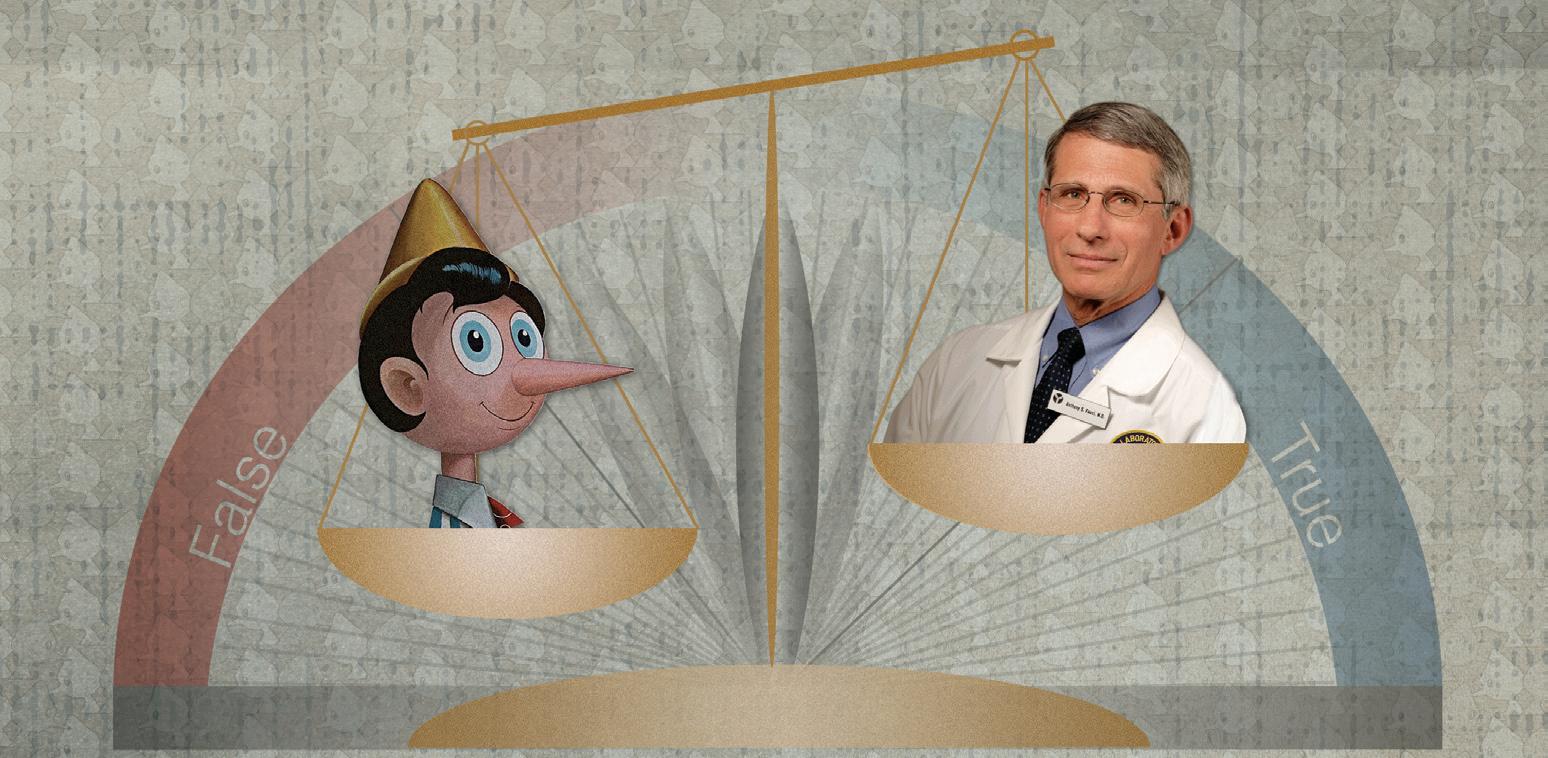
“Even when very smart humans are faced with a disease that can irrevocably alter their lives or kill them, they may have a tendency to recall information they find most compelling or memorable, even if it is blatantly false,” Platt said. “Personally speaking, I had a well-educated friend of mine ask me recently about the validity of misinformation regarding a health care practice for treating COVID-19 patients. It was too incredible to be believed.”
With an estimated end date of May 2021, the project has two important goals for Wang and Platt. First, they must thoroughly understand the relationships between legitimate pandemic safety communication being shared by U.S. scientific and government agencies, and inconsistent or incorrect health information regarding COVID19 being shared and distributed on Twitter. Secondly, RAPID will diagnose and document which of the two types of tweeted information, fact or fiction, is being retweeted and diffused more broadly throughout Twitter.
Kyle Niblett
25
K. Kinsley-Momberger
Does credible info on Twitter suppress misinformation?
Isolation and Mental Health Short Supply
Study looks for ways to improve mental resilience during pandemic
Recent findings from the study have shown that loneliness levels are higher in women, people living with children and people living in urban areas.
The study is also finding that thoughts of death or self-harm and experience of self-harm or abuse are higher among younger people and those living alone, with low household income, with a mental health condition, and living in urban areas.
Adults in the United States are invited to participate in the study.
Daisy Fancourt, an associate professor of psychobiology & epidemiology at the University College London and a co-principal investigator of the UF EpiArts Lab, initiated the study in the United Kingdom.
Experts say health care supply chains were suffering, even before COVID-19
As coronavirus cases headed for a peak globally, the world went on a scavenger hunt for ventilators, the expensive breathing machines that keep the sickest patients alive. But keeping the ventilators going requires parts to connect them to patients.
“Suddenly, that humble piece of plastic tubing that you almost didn’t acknowledge existed is the center of your patient care universe,” says Dr. Lars Beattie, the director of the emergency medicine residency program at the University of Florida.
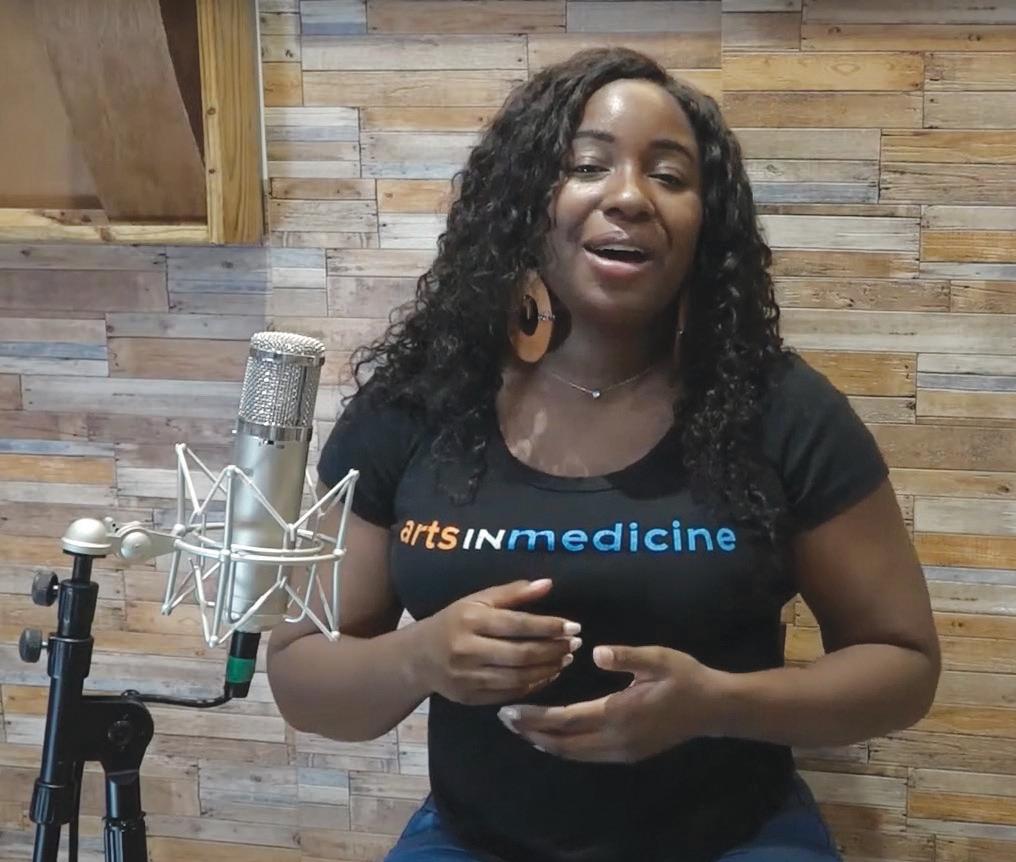
Across the globe, individuals, organizations, and governments implemented social isolation to protect each other from COVID-19. While social isolation was meant to slow the spread of the viral disease, sheltering in place carries its own threats to mental health and well-being.
Knowing that the arts can be an effective coping mechanism, researchers at the University of Florida Center for Arts in Medicine have partnered with University College London to help study the mental health impacts of enforced isolation. Their goal is to understand how certain activities, including the arts, may buffer the effects of social distancing in order to support people psychologically and socially during the pandemic.
“We are living in challenging times and our hope is that the data from this study will make a real difference in helping us understand how to address individual and community needs related to this pandemic,” says Jill Sonke, director of the Center for Arts in Medicine.
In partnership with Americans for the Arts Action Fund, UF researchers expanded Fancourt’s study to the United States.
The U.S. study launched in April 2020 and attracted thousands of participants and as of May 18 has 2,800 participants, who fill out a 10- to 15-minute survey each week. The study tracks a range of variables, including demographics, physical activity, dietary habits, stress, mental health status, and social engagement.
Weekly data reports are planned to be made public when the U.S. study has a minimum of 10,000 participants.
The Center for Arts in Medicine hopes the results will help inform recommendations to improve a sense of well-being and resilience during and after the crisis.
“Results of this study could provide evidence to support the use of the arts and other activities to mitigate negative mental health impacts during times of crisis,” Sonke says. “The potential impact goes far beyond the COVID-19 pandemic.”
Brandon McKinley
Plastic tubing, cotton swabs, face masks, surgical gowns, gloves, test tubes, chemicals for testing, medications for treatment – all these components are part of a complicated health care supply chain that already had some weaknesses before the pandemic, says Elif Akcali, an associate professor of industrial and systems engineering in UF’s Herbert Wertheim College of Engineering.
Common disruptions in a supply chain can stem from a temporary shortfall in a raw material. More severe disruptions can occur after a natural disaster, but unaffected regions can parachute in to help. The difference in the pandemic is that global supply chains buckled in a cascading fashion. Starting in the Far East, the virus and the shortages rolled toward Europe and then the United States and South America. As the supply chains in manufacturing centers in the Far East broke down, other countries could not step up to fill the gap.
“Typically, one node of a supply chain might break down and then recover, or if there’s a shortage in one area, someone from another area helps,” says Akcali, the Cottmeyer Family Innovative Frontier Faculty Fellow.
“This was the Black Swan event no one could foresee.”
26 Winter 2021 E tracts
Cienna Wesley, Musician in Residence with UF Health Shands Arts in Medicine, performs “Halo” by Beyonce and “Hero” by Mariah Carey, songs that are often requested by patients at the bedside.
Making the health care supply chain more resilient is the goal of a research team Akcali has assembled, including Beattie and other doctors and health care administrators.
Akcali says the slowdown in supplies of common drugs and chemical reagents critical in medical testing occurred early as the coronavirus took hold in China. Another core pharmaceutical manufacturing area was in Lombardy, the region of Italy with the highest concentration of coronavirus cases.
Akcali says of 156 generic drugs like blood pressure medications or antibiotics the critical ingredients for 85 percent of them are manufactured outside the U.S., mostly in China. Although there was a two- to threemonth supply of most of these common medications when the pandemic started, that quickly dwindled.
Dr. Rosemarie Fernandez, a clinical associate professor of emergency medicine, says doctors are accustomed to periodic shortages but COVID-19 made switching medications more challenging.
“There’s always a cyclical thing that happens with medications, but I think we’re feeling it a little more now,” Fernandez says. “Your first-line medication might be gone, but the
second line medication is gone, too, so you’re reaching deeper and deeper down the list.”
Before coronavirus, a patient going into an ICU might stay for three or four days, using a three- or four-day supply of sedation, medications and IV antibiotics, Akcali says. With coronavirus, patients can stay in the ICU much longer, an average of 11 or 12 days, creating a need not only for medications but also for equipment like ventilators. Demand went up just as supply constricted, she says.
“We’ve been seeing a shift in attention for some of these pharmaceutical and health care products that were kind of under the radar,” Akcali says.
If demand for PPE spikes again, it may be critical to identify new sources. The monthly output of PPE manufacturers in the U.S. is only enough to supply a large emergency medicine department in New York City for one week, Akcali says.
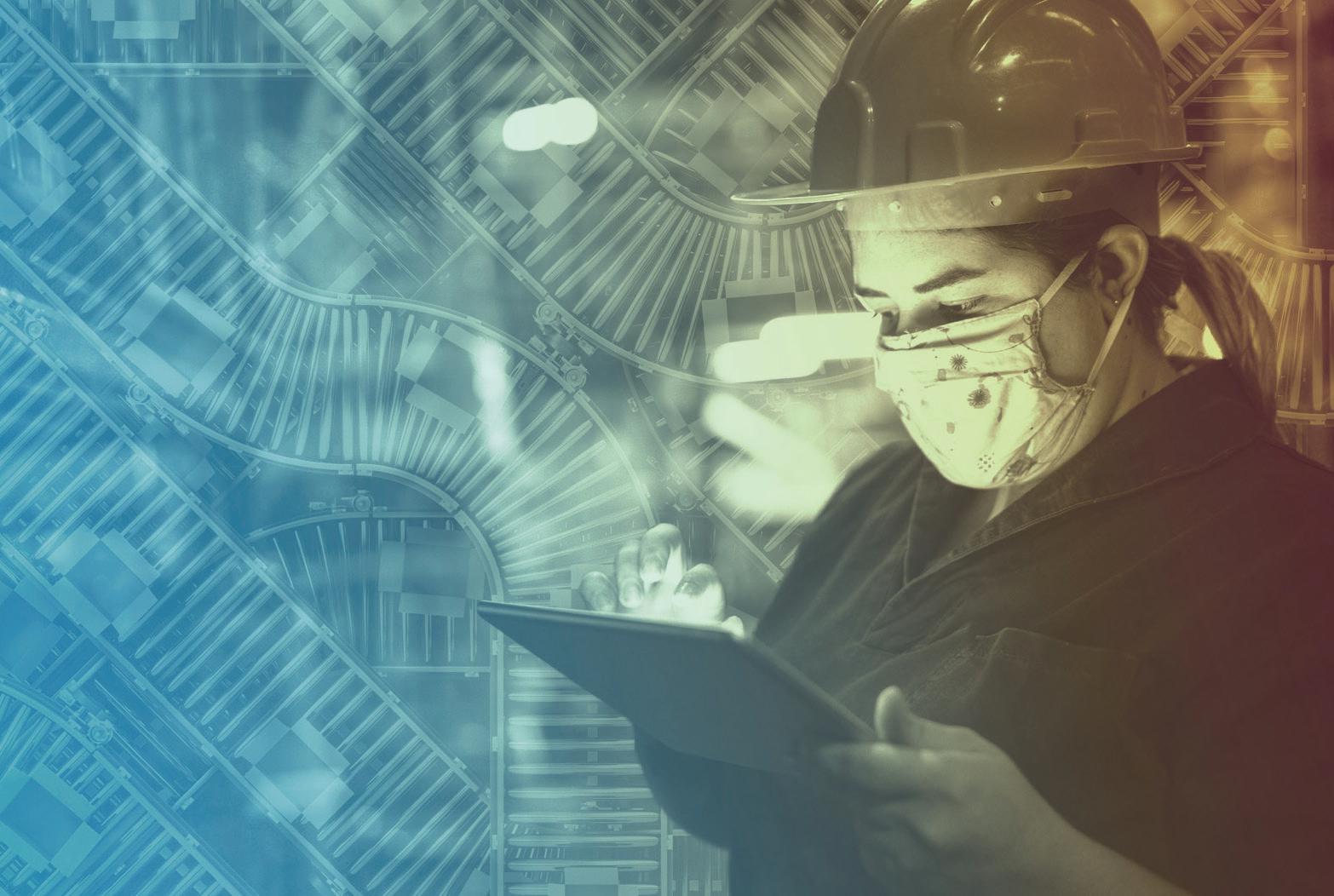
Beattie, who oversees residents, said the UF Health emergency department has been able to stay within Centers for Disease Control and Prevention guidelines on use and reuse of PPE, but even today he hangs on to his used masks, with some in “semi-retirement.”
“It’s a different situation today, but heading into this, it was a little frightening to think of not having the PPE,” Beattie says.
Beattie and Fernandez say they are looking forward to helping Akcali model what has already happened and ways to prevent disruptions in the future.
In her research, Akcali wants to tackle two things: supply chain agility and resilience. Sourcing, she says, is critical to both.
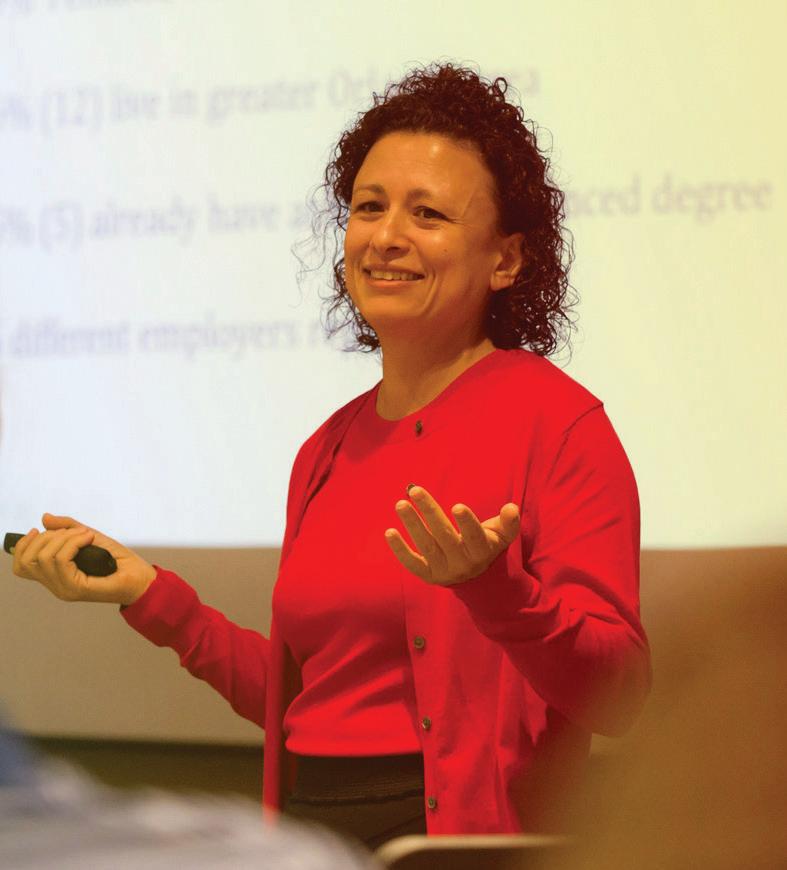
“How do we change our sourcing strategies so that we adapt quickly to changes in the environment?”
Resilience and agility may require health care enterprises to shift from volume-based contracts to contracts with multiple vendors and with emergency contingencies.
“At no point in time should I make myself reliant on a single source, because if that one source disappears, what am I left with?” Akcali says. “The next time, the next pandemic, we want to have checks and balances in place.”
Cindy Spence
27
Elif Akcali
Eric Zamora
Breath of Life
Surgeons perform double-lung transplant on COVID-19 survivor
Aman who battled back from COVID-19 only to face a lifethreatening crisis when his lungs began to fail has become the first person in the Southeast to receive a double-lung transplant after beating the coronavirus, thanks to the nationally ranked lung transplant team at UF Health Shands Hospital.
The patient, who is in his 50s and has asked to remain anonymous for privacy reasons, tested positive for COVID-19 in April. The virus’s progression left his lungs severely damaged and unable to function properly. Once physicians deemed it safe, he was transported from Texas, his home state, to Florida to await a transplant.
But before the procedure could take place, the advanced lung disease multidisciplinary team at UF Health focused their efforts on physically rehabilitating him while determining whether a transplant was his best choice.
“When he came to us, he was 100% dependent on ECMO, a form of life support, for more than two
months,” said Dr. Tiago Machuca, chief of the division of thoracic surgery and surgical director of the lung transplant program. “Our goal was to use the initial time he was under our care to not only optimize his transplant candidacy but also investigate if his lung condition was truly end-stage.”
Due to the newness of the SARSCoV-2 coronavirus, it was challenging to identify the features that would signal the patient’s lung damage was irreversible, said Machuca. Initially, he was critically ill and unable to stand on his own. His chances of other complications, such as infection or bleeding, were high.
“This was someone who had survived a terrible virus but at a high cost to his body,” said Dr. Abbas Shahmohammadi, an assistant professor of medicine in the UF College of Medicine and a lung transplant specialist on the team.
What followed next was a battery of treatments for the patient’s infections and corresponding inflammation, as well as physical and occupational
therapy to help him regain strength. The latter included regaining his activities of daily living, or ADLs.
Tony Garcia, his occupational therapist, helped the patient practice motions such as sitting up in bed, standing without assistance, and walking to the sink.
“The patient was incredibly motivated, never said no, and worked with us seven days a week,” said Garcia. “He was always willing and able to do whatever it took to get a little bit stronger.”
In order to diversify the man’s treatment, Garcia said he turned to a shared hobby.
“He and I both have a strong passion for golf, so part of his therapy was doing golf in his room,” Garcia said.
Garcia was just one of the many providers who brought the patient back from the brink.
Key to the success of the pulmonology and lung surgery program, ranked 37th in the United States in the U.S. News & World Report’s 2020-21 Best Hospitals survey, is the interdisciplinary
Pediatric Telehealth
UF Health awarded $1 million grant to provide pediatric telehealth services to underserved patients
The University of Florida College of Medicine’s department of pediatrics has been awarded nearly $1 million to expand telemedicine services and equipment among underserved and vulnerable populations.
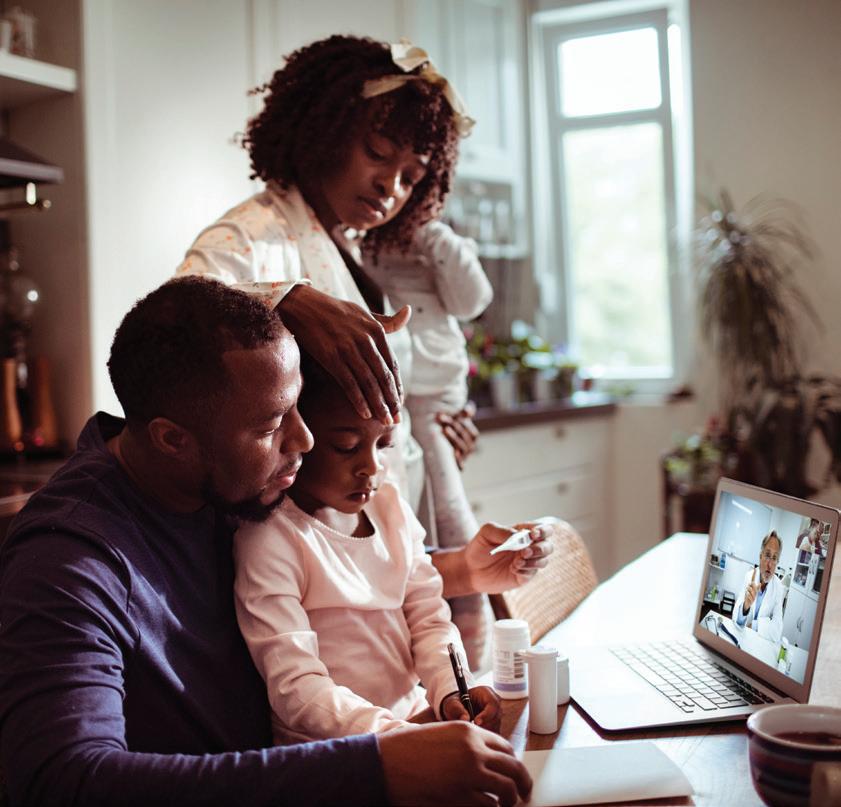
The $967,957 award from the Federal Communications Commission’s COVID-19 Telehealth Program will be used to acquire an array of monitoring and diagnostic equipment, including tablet and laptop computers as well as Wi-Fi access points. It will also be used for specialized home monitoring equipment such as internet-connected stethoscopes, electrocardiogram equipment
for heart monitoring, blood pressure cuffs, continuous blood-glucose monitors and otoscopes for ear, nose and throat evaluation.
“This will enable all pediatric specialties to reach patients who cannot visit our practices and who have not had access to our providers previously through telemedicine. It will allow us to provide health equity, narrow health disparities, reach vulnerable populations, improve disease management and provide preventive pediatrics in a way that we have not been able to before. To do this, we will need to really listen to diverse populations and
28 Winter 2021 E tracts
nature of its members. This variety in expertise which includes thoracic surgeons, pulmonologists, intensivists, ECMO specialists and nurses helped the team evaluate the patient’s progression.
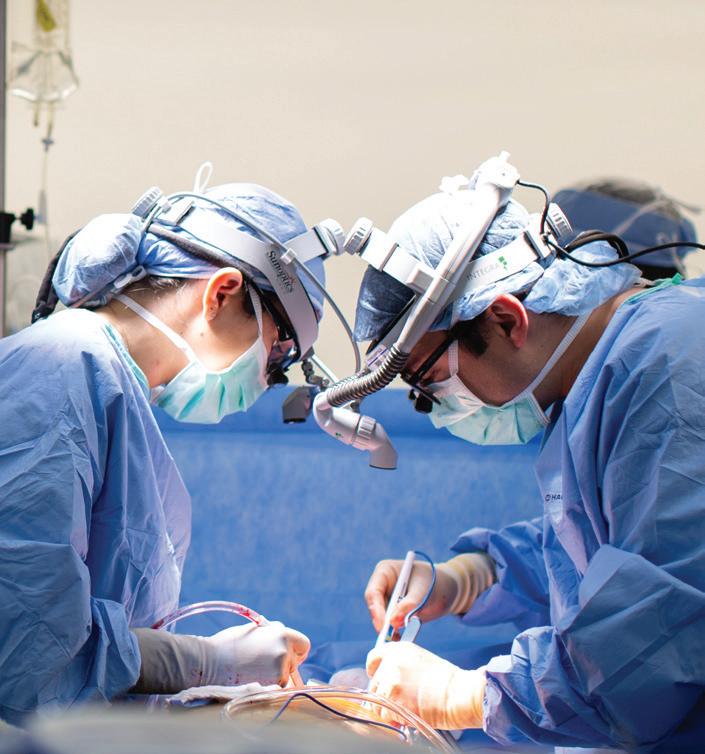
“Our team works from a multidisciplinary perspective,” said Dr. Andres Pelaez, medical director of the lung transplant program and an associate professor of medicine in the UF College of Medicine. “We witnessed the way in which the virus had completely destroyed his lungs, and while his frailty was initially significant, we saw how determined he was and knew he could benefit from lung transplantation as we watched him become less frail over time.”
Despite the patient’s improved strength, he began to show signs that the lung damage was permanent. He needed increased levels of ECMO, and imaging showed signs of advanced chronic lung disease.
“We concluded that we were dealing with a situation that was not tailor telemedicine to achieve the best outcomes for all,” said Dr. Desmond Schatz, interim chair of the UF College of Medicine’s Department of Pediatrics part of UF Health, the university’s academic health center and interim physician-in-chief of UF Health Shands Children’s Hospital.
The funds will help an already robust pediatric telehealth program optimize care and give patients remote access to specialized providers during the COVID-19 pandemic and beyond.
“This FCC award will support direct-to-patient telemedicine during the COVID-19 outbreak. Individualized telemedicine kits will be created and shipped directly to families in need
reversible,” Machuca said. “These were signs that our window of opportunity was quickly closing.”
Life changed for the patient when, after 33 days at UF Health Shands Hospital and more than three months on ECMO, donor lungs became available. Due to the limited size of the patient’s chest cavity, Machuca performed a lobar transplant, resizing the donor lungs to ensure a perfect fit.
“This treatment brings muchneeded hope that other selected patients struggling with coronavirus or its aftereffects can have a second chance,” Machuca said. “But this disease and its
impact on the body certainly require further understanding.”
While lung transplants may be an option for those whose lungs are severely damaged by COVID-19, Machuca cautions that the evaluation for transplant candidacy should still be performed on a case-by-case basis. Expertise and experience with end-stage lung disease in a multidisciplinary setting are a necessity.
“A lung transplant is a major, complex surgery, and the aftermath requires the patient to make lifestyle changes,” Machuca said. “You need to be sure that this kind of a procedure is not just the patient’s only option but their best option.”
The patient is recovering steadily and has been disconnected from ECMO, demonstrating the resilience the team said he’s displayed from the beginning.
to ensure they can maintain safe and highly effective access to general pediatric and specialty care. We look forward to seeing the long-term effects of improved telemedicine access for children in the state of Florida during and after the COVID-19 pandemic,” said Dr. Michael J. Haller, chief of pediatric endocrinology.
Some of the new equipment needed for the telehealth expansion was shipped as soon as July 1 while the remainder will arrive in the next three to four months, Haller said.
The grant comes amid an overall surge in telehealth visits at UF Health. As the wave of COVID-19 cases spread this spring, UF Health experienced a
more than 7,000% increase in telemedicine appointments during a one-month period in March and April. Now, almost every UF Health practice has a telehealth component. In addition to reducing the risk of infection, pediatric telehealth has other advantages. For example, young heart patients and their families sometimes come long distances to UF Health for specialized care and follow-up appointments. A single telehealth visit can eliminate the time and expense of traveling to Gainesville from, for example, the Panhandle or Jacksonville.
Doug Bennett
29
Dorothy Hagmajer
Members of UF Health’s lung transplant team, shown performing a procedure in 2019.
Mindy C. Miller
Voting During COVID-19
Team creates system to lower health risk when voting
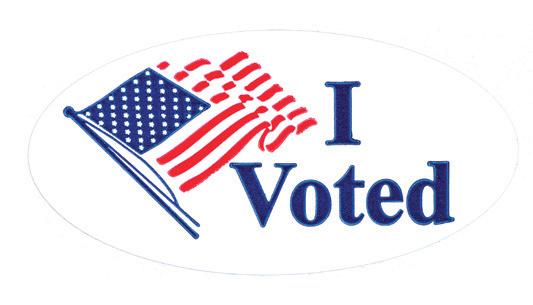
As people headed to the polls last year, many wondered how to stay safe while voting.
Juan E. Gilbert, the Banks Family Preeminence Endowed Professor and chair of the UF Department of Computer & Information Science & Engineering (CISE), created a ticketing system to help voters maintain social distancing while exercising their right to vote. Gilbert, who has been conducting research on elections for more than 15 years, saw a need down to the local level and filled it.
“Everyone wants to feel safe while they are casting their vote,” he said. “The inLine Ticketing System lowers voters’ risk of contracting COVID-19 by reducing the length of lines and reducing the amount of time people need to stand close to others.”
After identifying the concerns of sending thousands to the polls during a pandemic, Gilbert started working on an easy-to-use system that allowed poll workers to hand out tickets to voters waiting in line. These tickets were printed out on an as-needed-basis and
given to voters as the lines got long. Each ticket was printed with a QR code, along with a date and time to return for voting in English and Spanish. As voters returned at their designated time, the QR code was scanned, and they proceeded to vote.
Gilbert said he hopes this app will encourage voters to participate in more elections.
“The inLine Ticketing System takes the risk out of waiting in line because your ticket holds your place,” he said. “Voters can keep their distance and come back at their designated time to vote as they normally would.”
The inLine Ticketing System has many applications beyond voting, such as reducing lines at COVID-19 testing sites.
Gilbert has been working on securing elections for more than a decade. In 2003, Gilbert and his research team developed Prime lll, the “first open-source universal design” voting system that accommodates persons with and without
“Everyone wants to feel safe while they are casting their vote … The inLine Ticketing System lowers voters’ risk of contracting COVID-19 by reducing the length of lines and reducing the amount of time people need to stand close to others.”
— Juan Gilbert
disabilities and provides a paper printout of the ballot.
Last year, Gilbert testified as an expert witness regarding election security during a hearing by the House Administration Committee. He shared his expertise in voting system security, accessibility and usability.
Gilbert concluded in his testimony in January 2020 with, “As a nation, we have the capacity to build an elections system for the future but doing so requires focused attention from citizens; federal, state, and local governments; election administrators, and innovators in the academy and industry. It also requires a commitment of appropriate resources. Representative democracy only works if all eligible citizens can participate in elections and be confident that their ballots have been accurately cast, counted, and tabulated.”

30 Winter 2021 E tracts
Maintaining Migrant Health
COVID-19 risk factors vary by farm workers’ legal status
An estimated 75% of Florida crop workers have at least one underlying health issue that puts them at risk of developing COVID-19 complications, UF/IFAS research shows.
However, sources of risk differ according to the workers’ status as authorized or unauthorized, according to the study.
That is largely because domestic unauthorized workers are significantly older than H-2A workers, which increases their risk of developing COVID-19 complications, said Gulcan Onel, a UF/IFAS assistant professor of food and resource economics.
Most of the members of both legal groups of workers do not speak English and have less than a high school education, Onel said.
“These findings highlight the need for accessible and culturally minded outreach efforts to educate workers about preventive measures for COVID-19,” she said.
One example of UF/IFAS outreach is based at the Southwest Florida Research and Education Center in Immokalee. Faculty and experts there hosted workshops in September and October to help train farm supervisors to keep their employees as safe as possible from COVID.
For her study, Onel used three different sources of data, including a citrus harvester’s survey her team conducted in several Florida counties. Onel also synthesized existing health and employment data from federal sources. She then compared the demographic differences of H-2A workers with those of unauthorized agricultural workers to draw conclusions about COVID-19 risks among these farm workers.
The federal H-2A guest workers program provides legal, temporary nonimmigrant visa classification to foreignborn workers, where able, willing and qualified U.S. workers are not available. That work typically lasts no longer than one year.
Unauthorized workers are foreignborn workers who lack proper, legal documentation to work in the United States. Data show that unauthorized domestic workers, on average, have been in the United States for more than a decade.
In addition to legal status groups, workers’ susceptibility to the virus varies by location across Florida counties, the study shows.
Onel and her colleagues saw a high correlation between counties with the most COVID-19 cases and counties with the most agricultural workers. Among counties with the highest crop worker populations, Miami-Dade, Palm Beach and Hillsborough counties had the most COVID-19 cases. They were followed by Broward, Collier, Lee, Manatee and Polk counties.
Among other findings:
H-2A workers live in employerprovided and controlled housing, which may make it easier to take measures to help mitigate COVID-19 for them, compared to domestic workers. On the other hand, H-2A workers spend more time traveling to their work sites than domestic workers, which may make transportation a higher risk factor for this group of workers.
Preventing or mitigating COVID19 among unauthorized workers gets more complicated by today’s immigration environment. Contact tracing and encouraging workers to seek testing and/or care may be difficult because unauthorized domestic crop workers fear they will be deported. Ensuring privacy of workers and their contacts will be vital for effective mitigation strategies.
H-2A workers send more of their earnings back home compared to domestic unauthorized workers; therefore, H-2A workers likely have stronger ties with family in their countries of origin, the survey found.
“This is important with the recent spikes in COVID-19 cases in Mexico and South America; higher remittances (back home) indicate that H-2A workers who are mostly married and have minor-aged children likely have stronger ties to their country of origin,” Onel said. “They might be more reluctant to return to U.S. farms amid the COVID19 pandemic. On the other hand, existing workers in the fields may continue working, even when they are sick, to keep up with their support for family back home. Piece-rate payment schemes may further encourage risk-taking behavior among workers, posing a challenge for containing outbreaks.”
While the study’s findings provide insights into COVID-19 risks for Florida crop workers, predicting when a COVID-19 outbreak will occur is difficult and no trivial matter, Onel said.
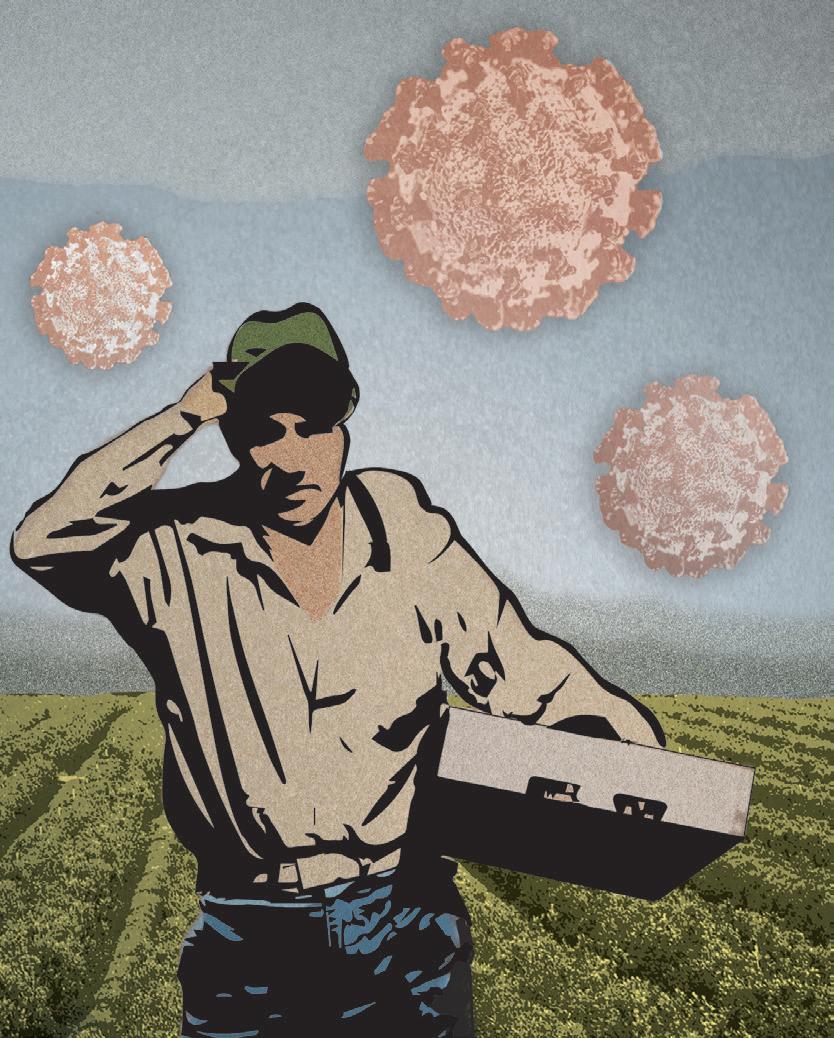
“This type of prediction requires tracking of data over time,” Onel said. “The county-level maps in our article which layer farm worker populations and COVID-19 cases can easily be updated periodically for more up-to-date information on higher-risk agricultural counties.”
Brad Buck
31
For many UF researchers, resilience was the key word as they found a way to keep science in motion.
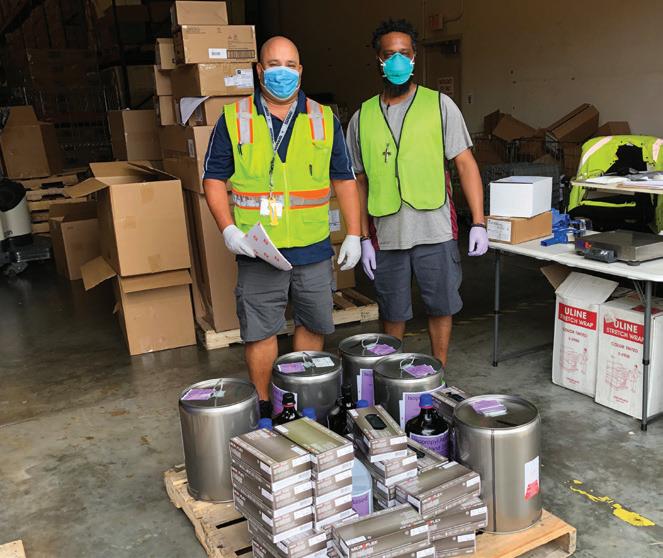
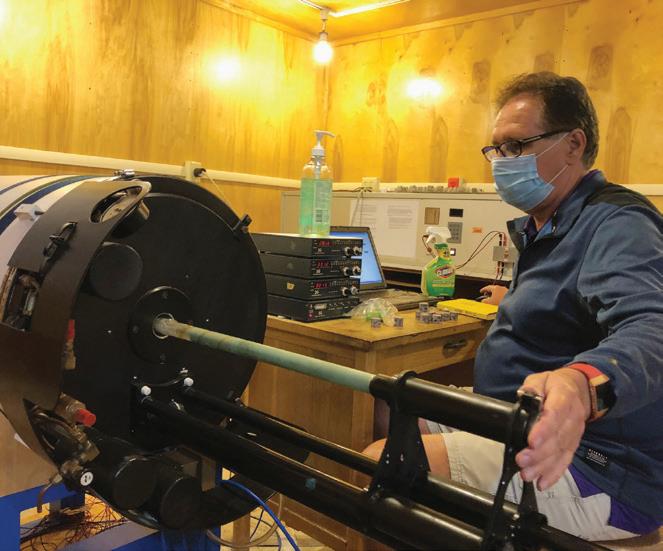

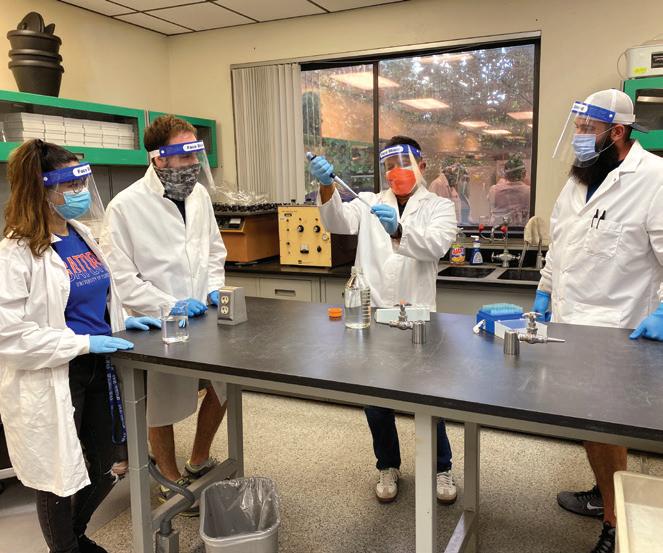
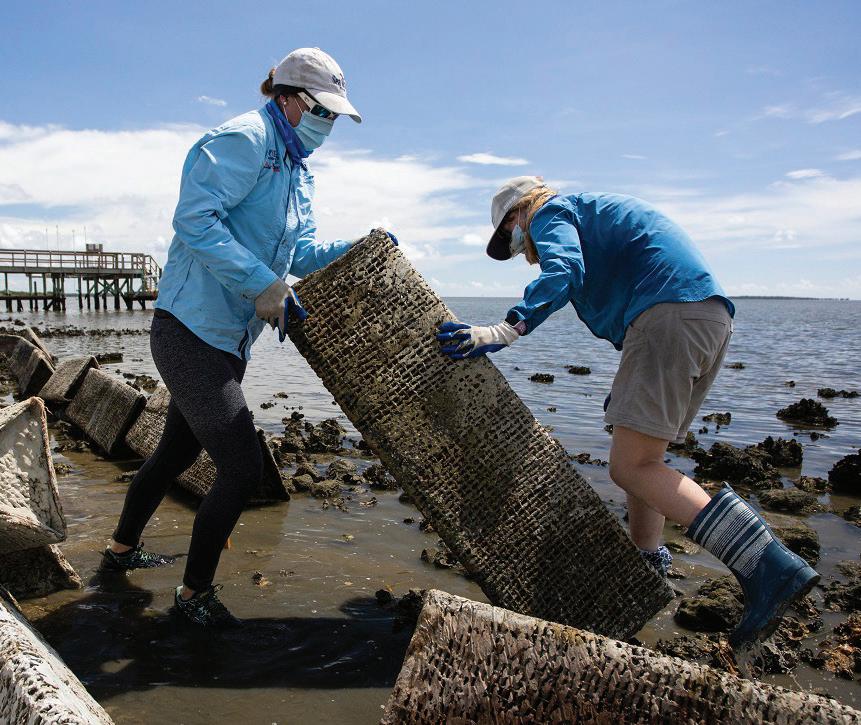

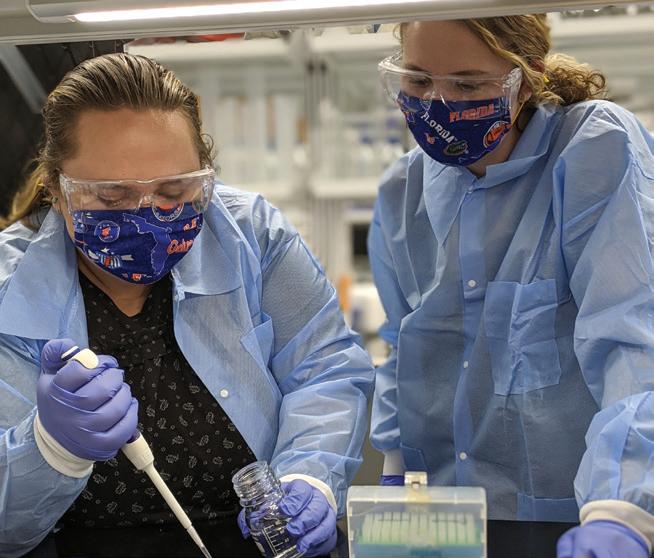
Locking the lab and turning off the lights meant an interruption but not a complete shutdown. Scientists who were in the midst of long-term studies on which years of future work would depend could not abandon research without great cost, so dining room tables were converted into lab benches.
Record-breaking Research Awards $900.7M
Those who could not access their labs turned their attention to writing, keeping peer reviewers busy and creating mini-publishing booms in some labs.
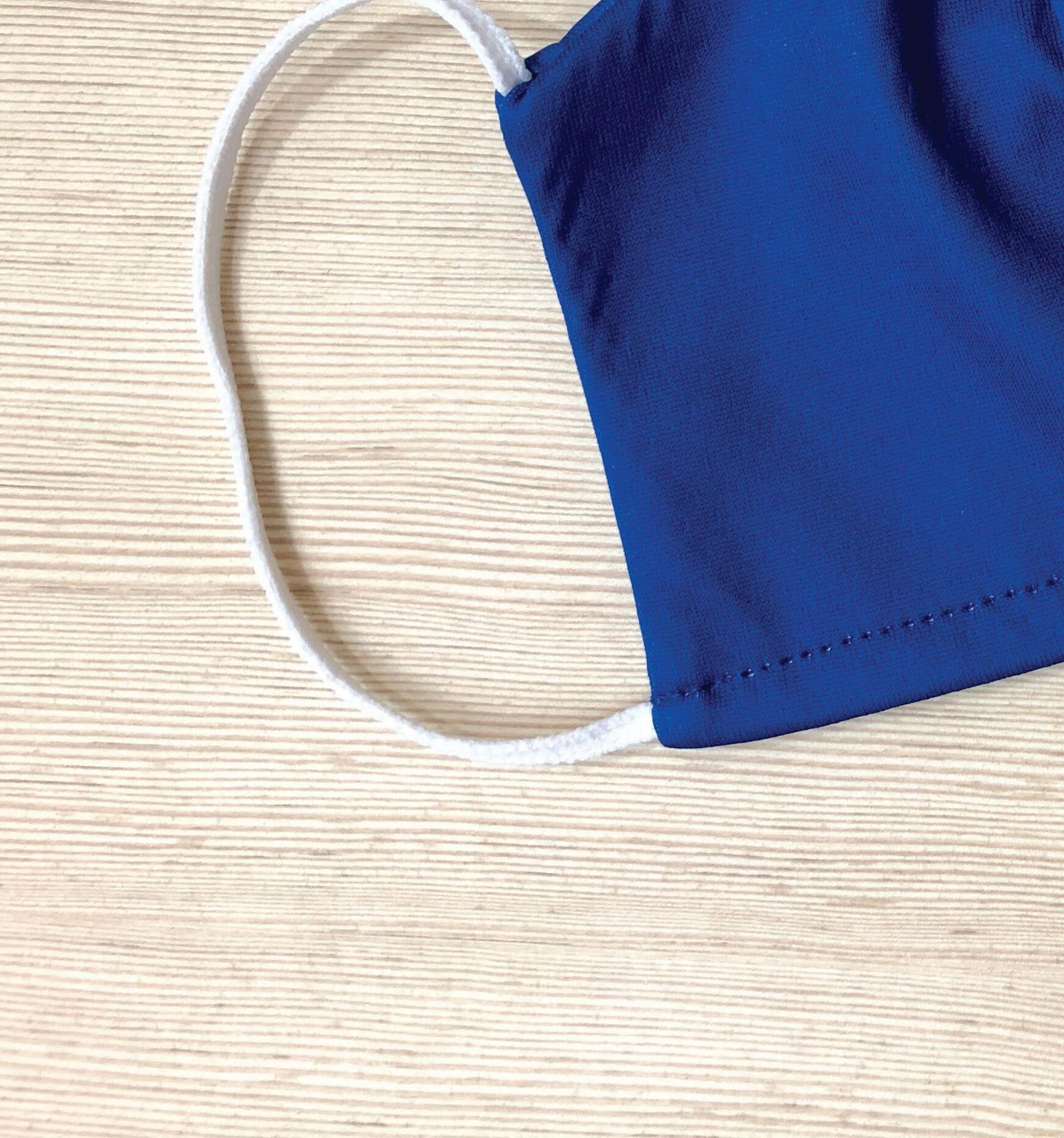
And for the university as a whole, the 2020 year in research set records, with UF hitting an alltime high for funding at $900.7 million, despite the two-month interruption. That UF’s research engine ranked 15th among public universities would keep purring was evident in the 6,000 funding proposals processed in the 2020 fiscal year, including many related to COVID-19.
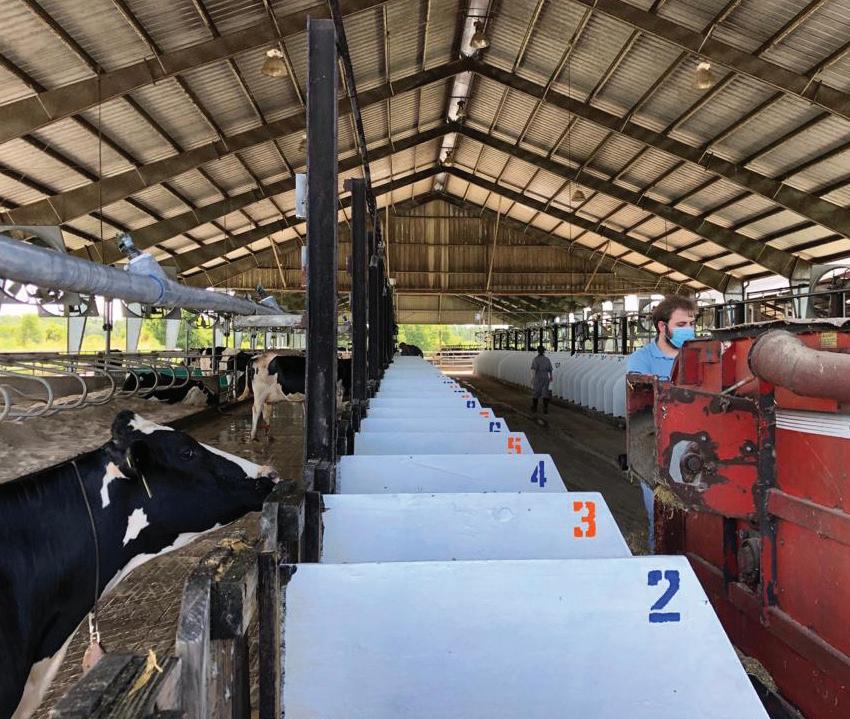
To learn more about the people pictured here and others, visit http://explore.research.ufl.edu/sustaining-science.html

2 Winter 2021
Sustaining Science













 Rhoel Dinglasan
Rhoel Dinglasan






























 Holly Lane Associate Professor of Education hlane@ufl.edu
Holly Lane Associate Professor of Education hlane@ufl.edu

























